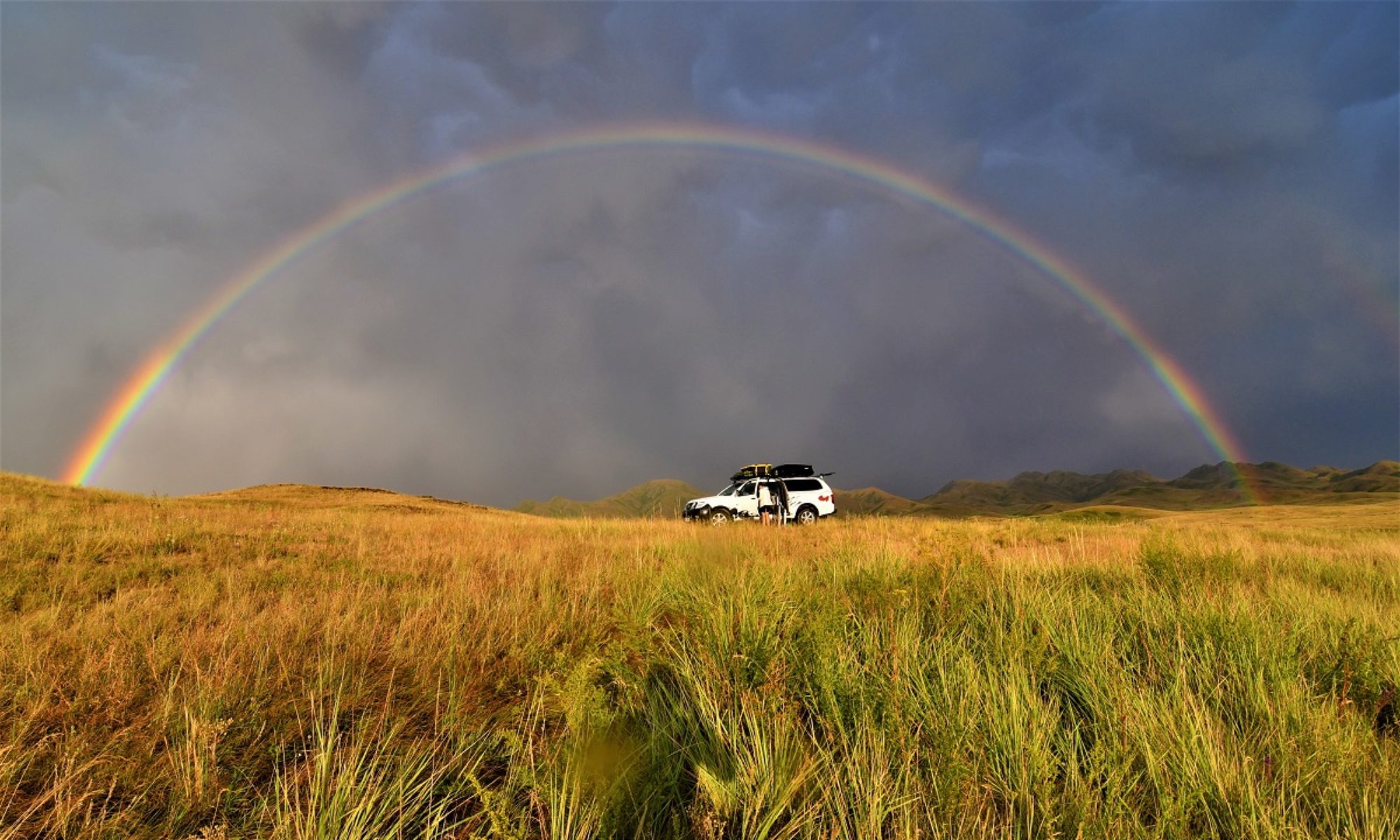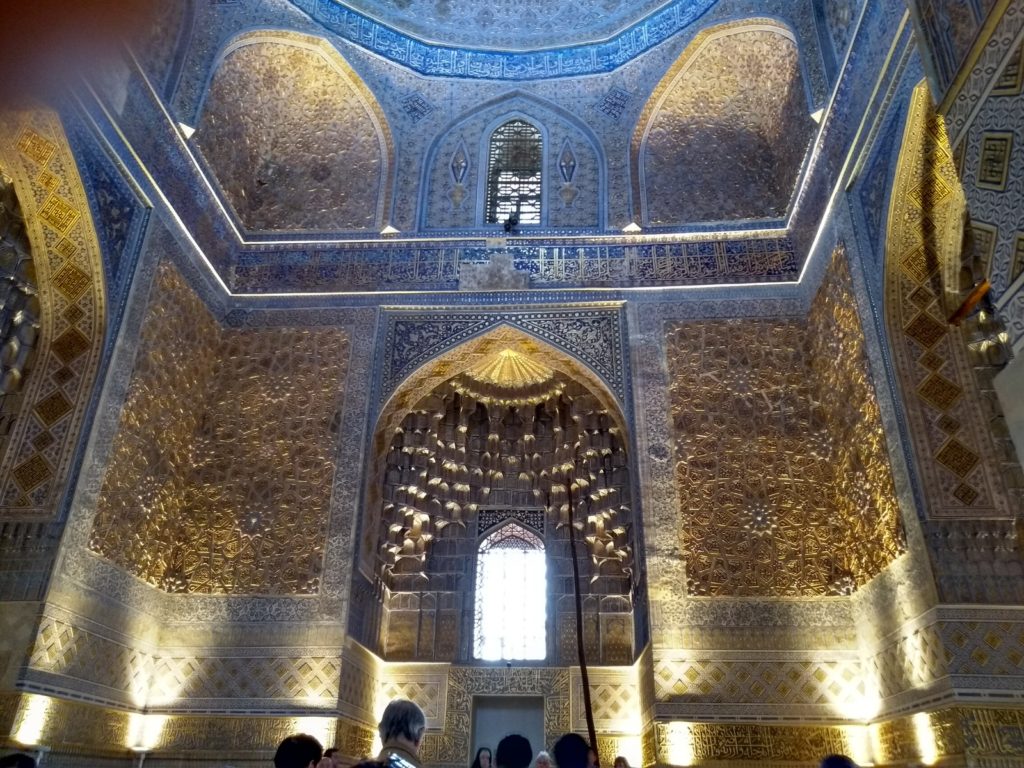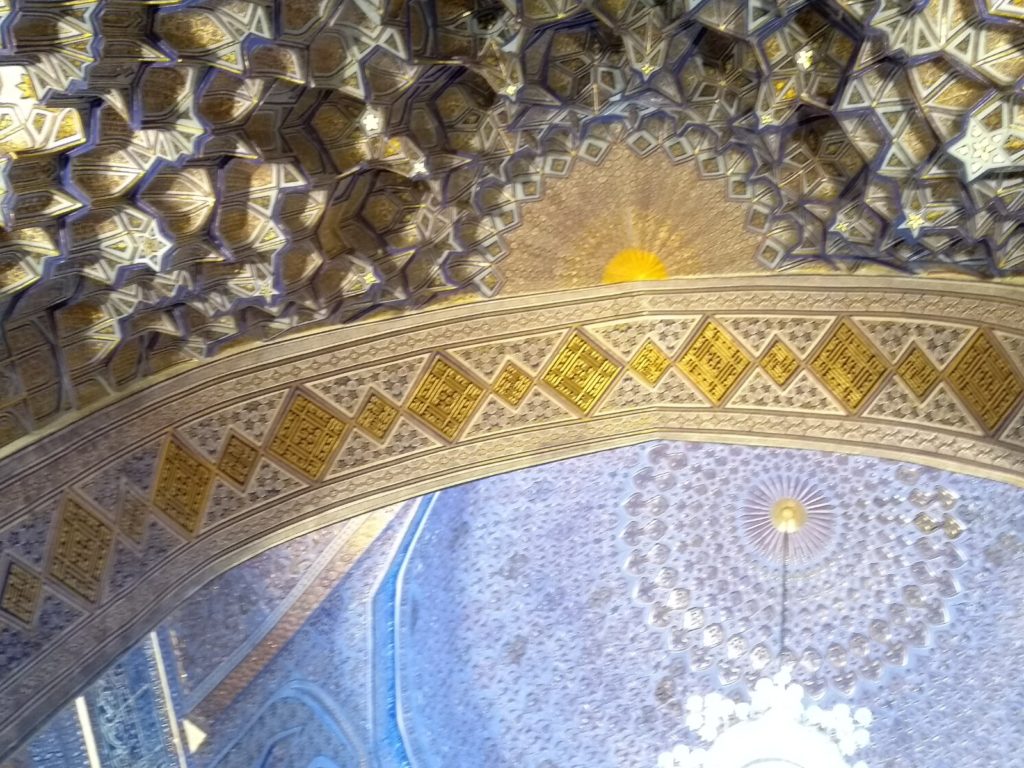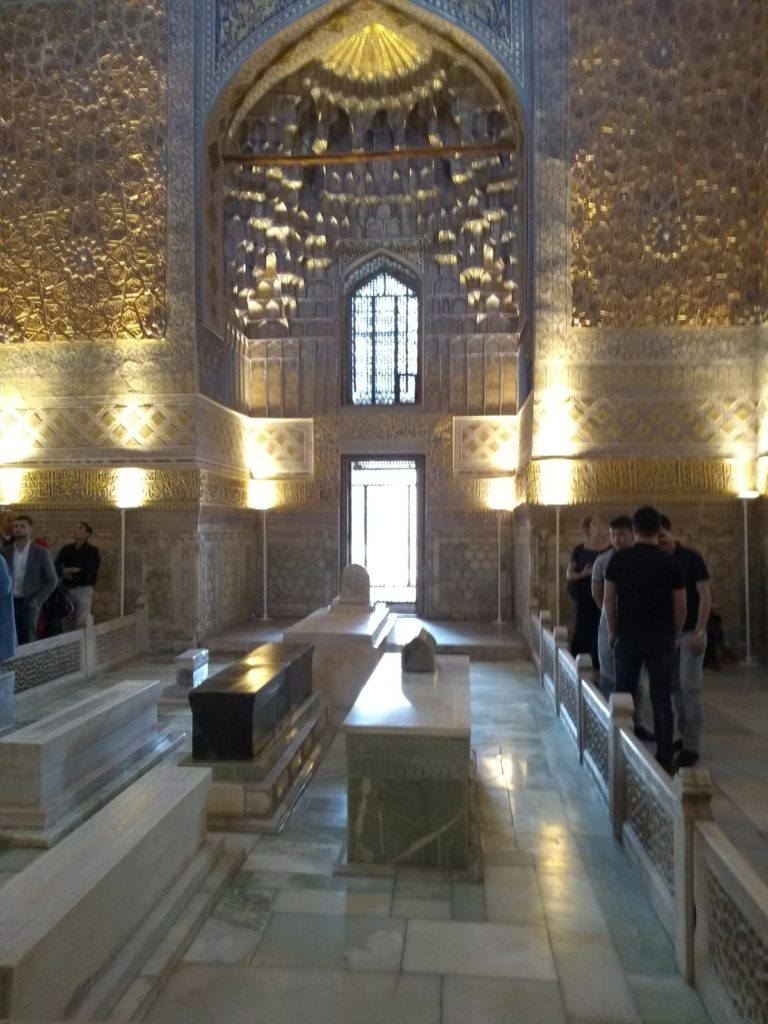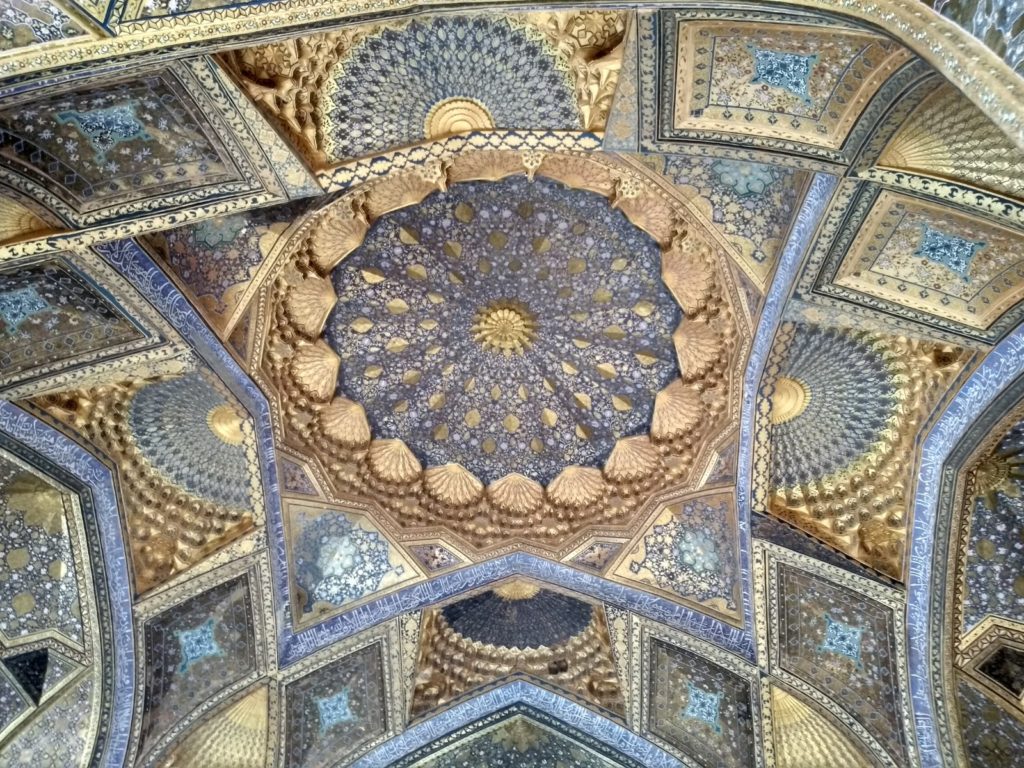Monday 13th May, 2019
Drove to Nukus , around 30 km from the border and decided to stay the night. Walked through the bazaar, bustling with activity as it is also right next to the bus station. The town itself has no appeal but it has a couple of good museums, one of which (Savitsky Museum) is reputed for its collection of russian avant-garde paintings.
Tuesday 14th May, 2019 – KHIVA
Visited the Museum before leaving for Khiva. We were assailed by excited school children who wanted selfies with us:
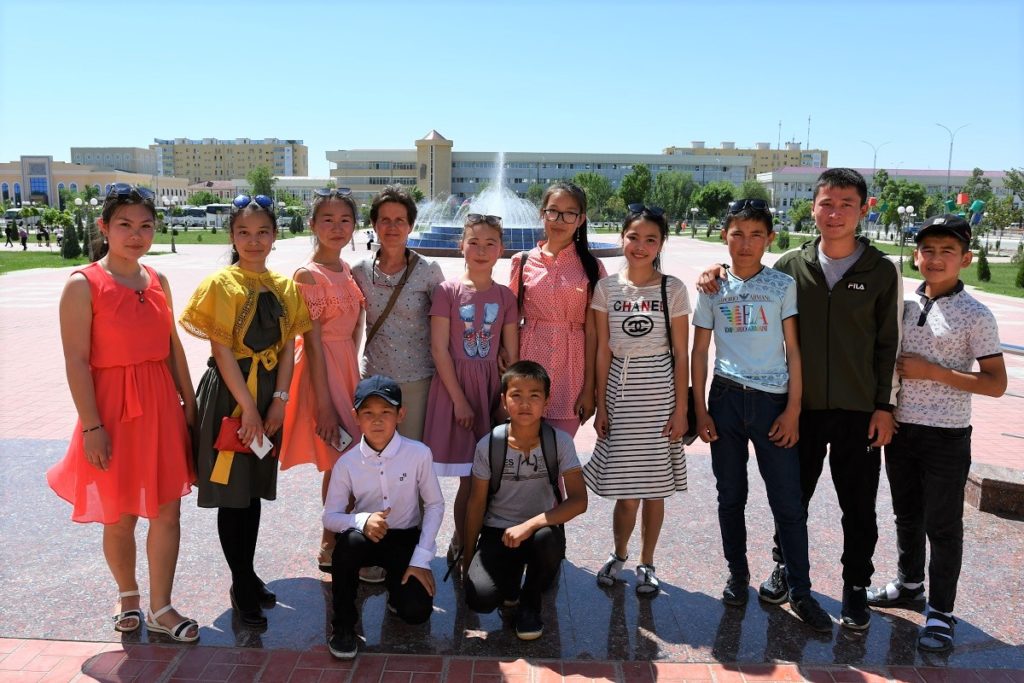
We then drove on to Khiva, some 205 km away (and very close to the border with Turkmenistan). The road is one of the main road running across Uzbekistan and was in good condition.
Found a hotel very close to the wall encircling the old city (“Ichan Kala”) and went to rediscover this city which we had loved during our first visit, 8 years ago. We were not disappointed but of course tourism also leaves its mark and there is a growing number of coffee shops selling capuccinos and lattes and restaurants offer western food alongside local dishes. A shame as this mondialisation takes away some of the appeal of travelling ( at least for us).
Khiva is one of the important sites of the Great Silk Road and has a long and rich history as shown by the number of Madrassah, mosques and mausoleums.
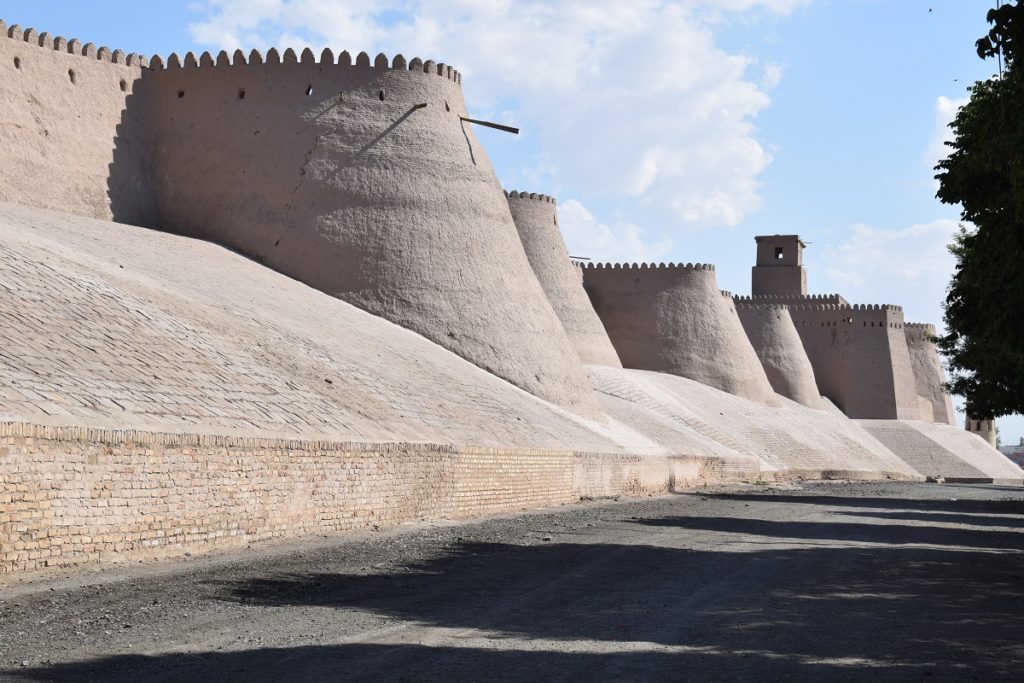
The wall near Ota Darvoza (Western gate) 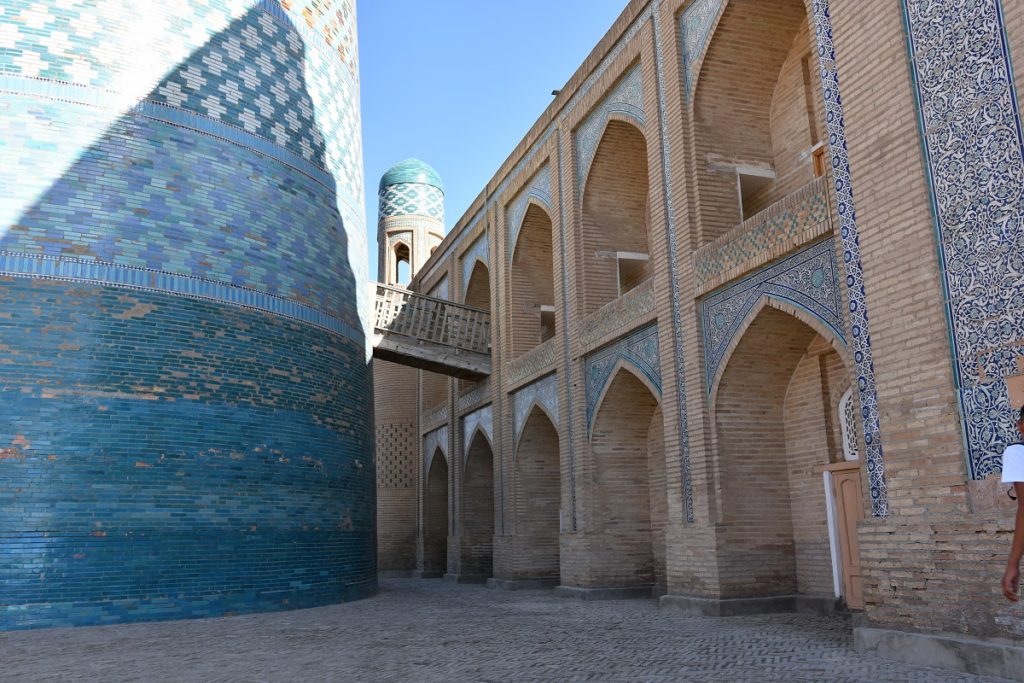
Access to the Kata Minaret from Mohammed Amin Khan Madrassah 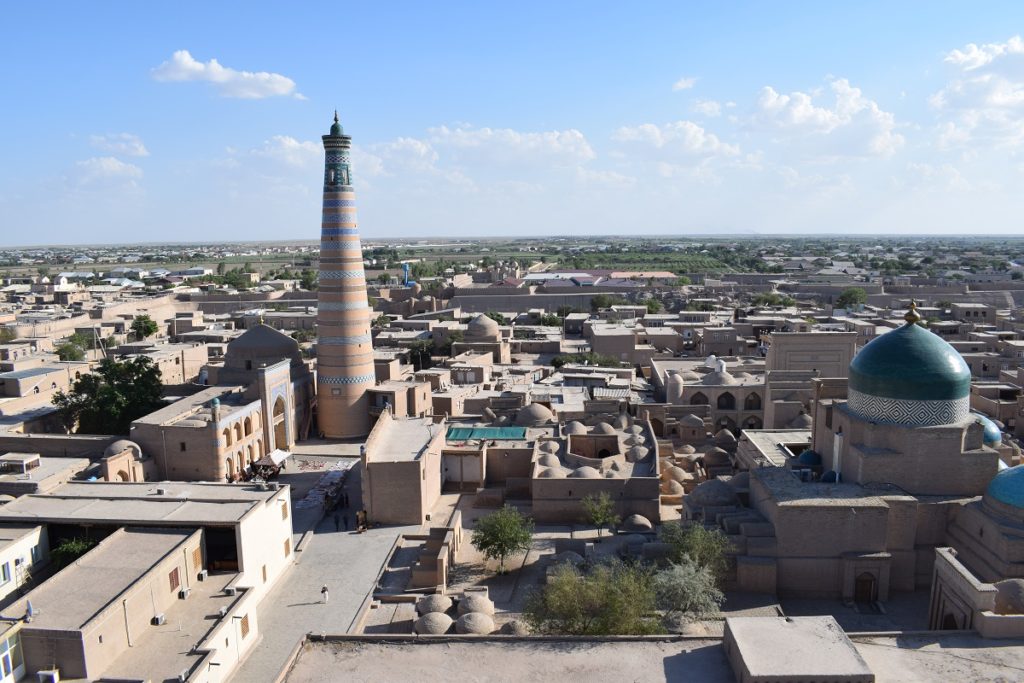
View from the Juma Mosque minaret 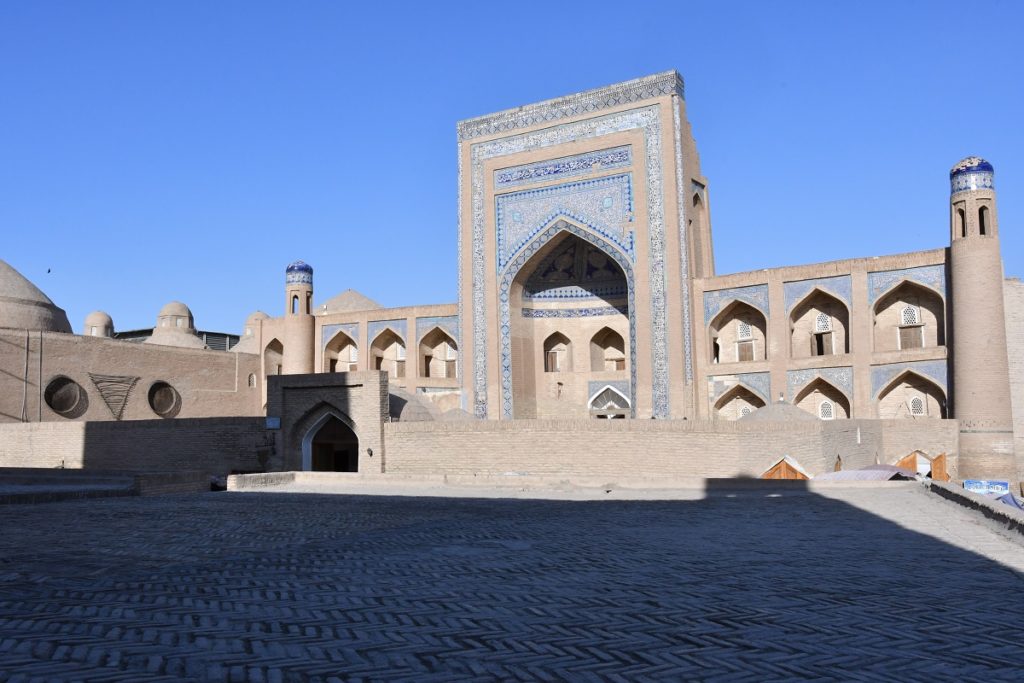
Mohammed Rakhim Khan Madrassah 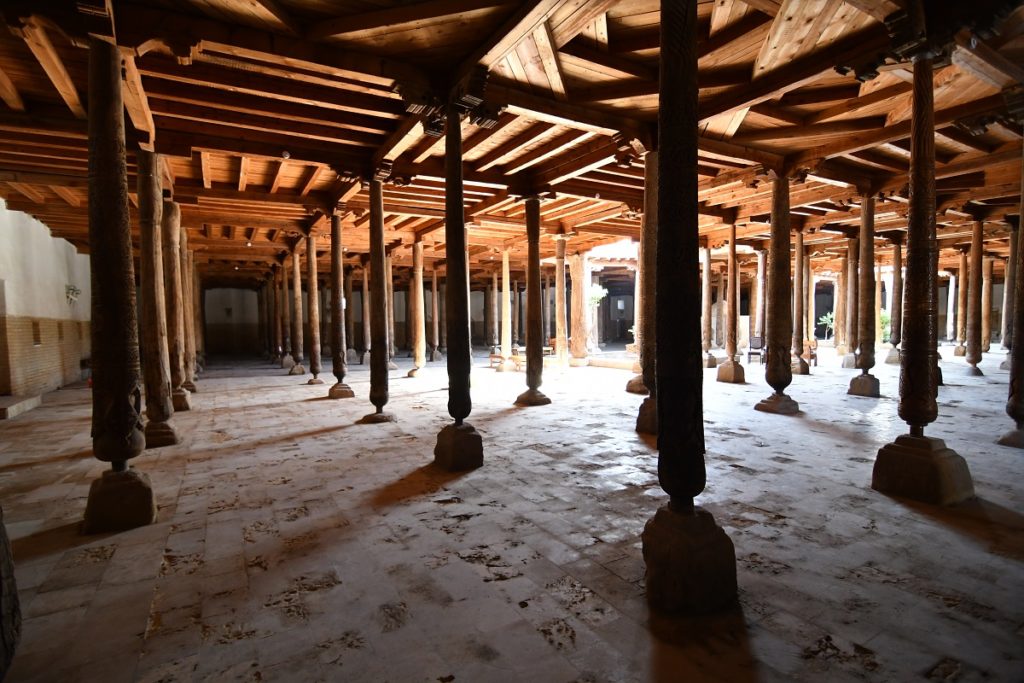
Juma Mosque (Friday mosque)- 213 pillars, each beautifully carved 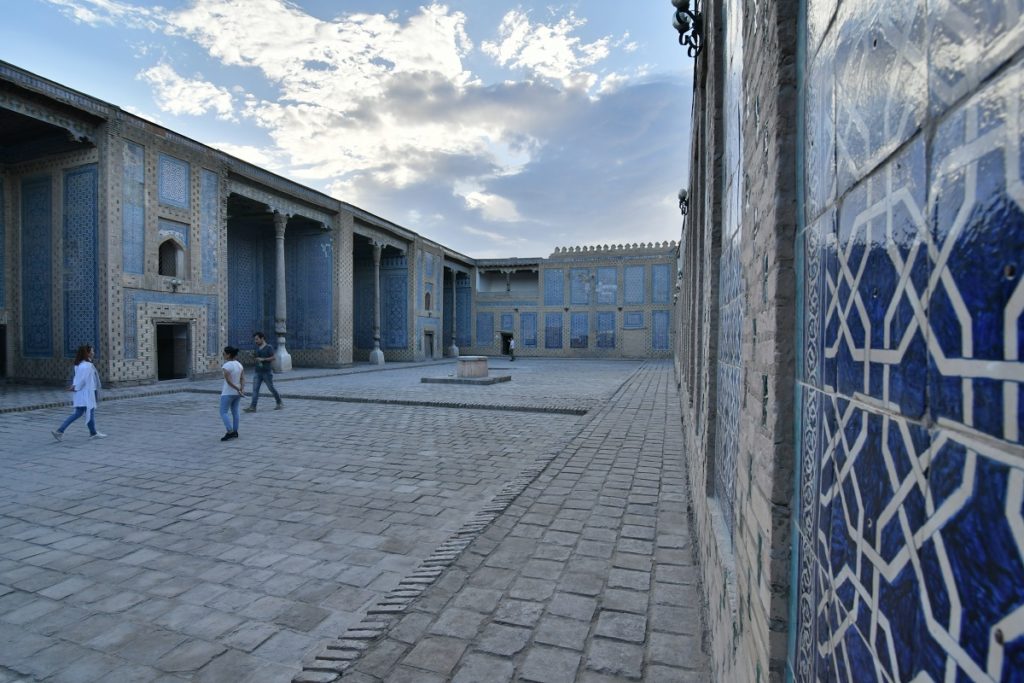
Tash Hauli Palace 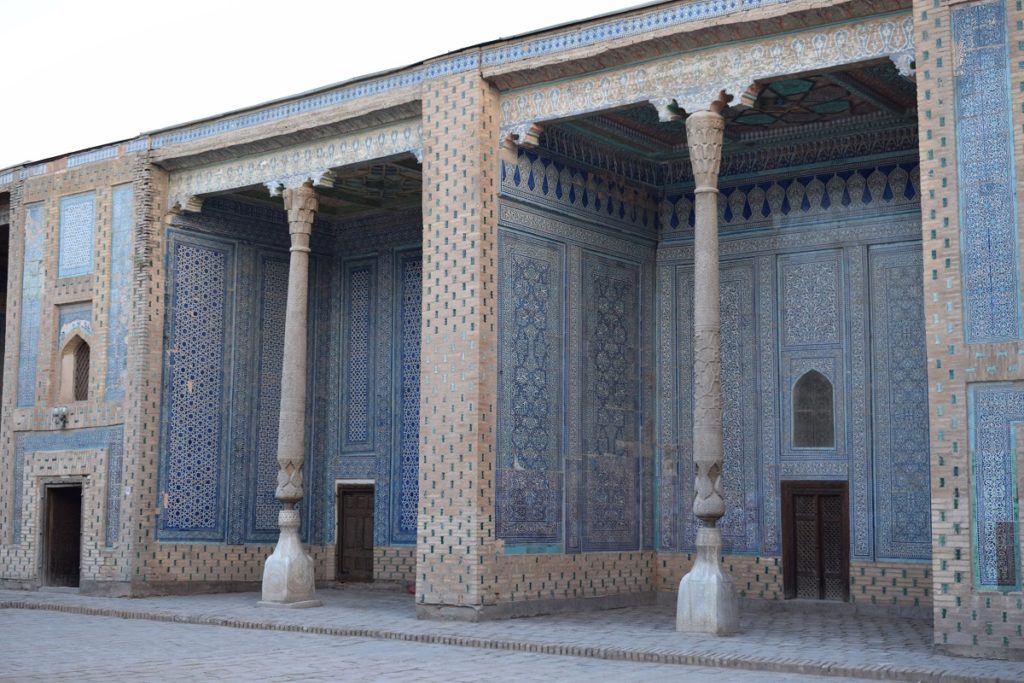
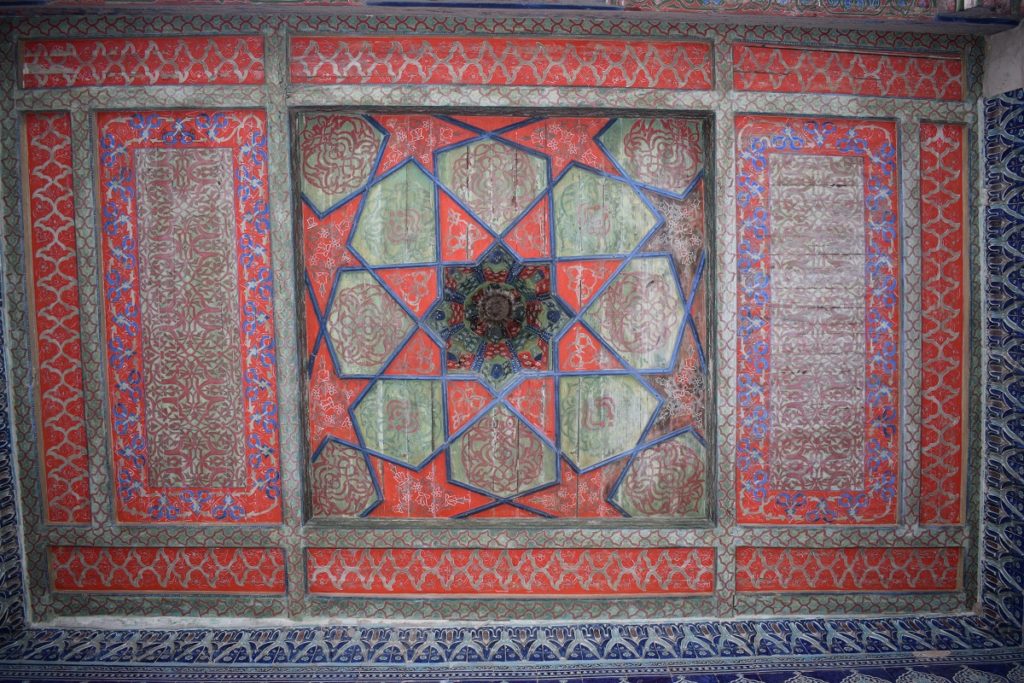
Ceiling detail 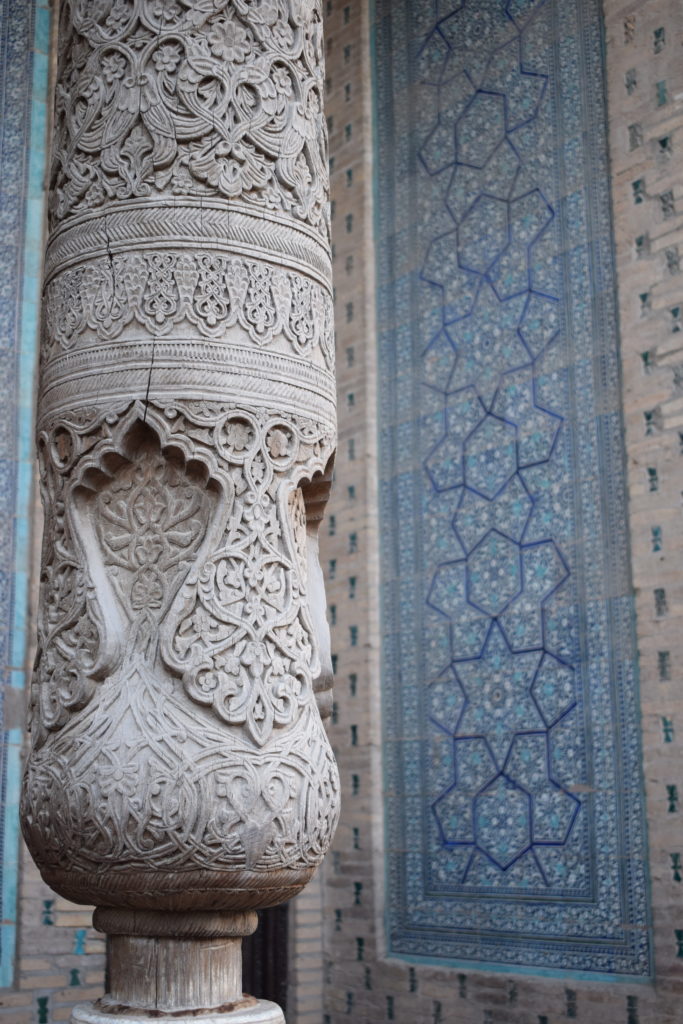
Harem- Tash Hauli Palace – Column detail 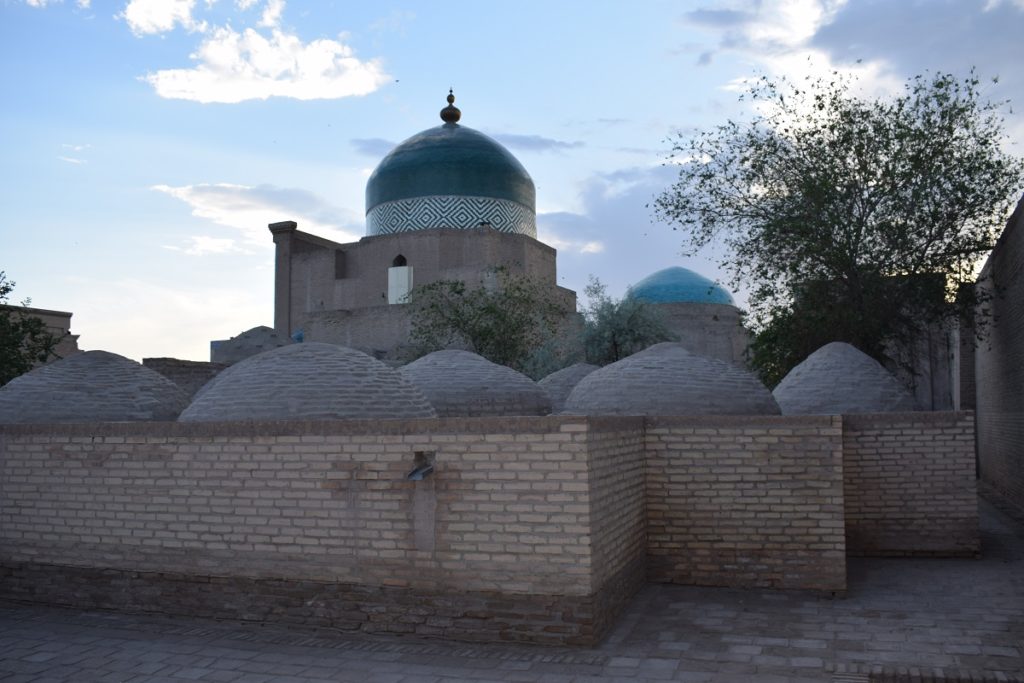
Mausoleum of Pakhlavan Mahmoud (the Hercules of the East- died 1325) 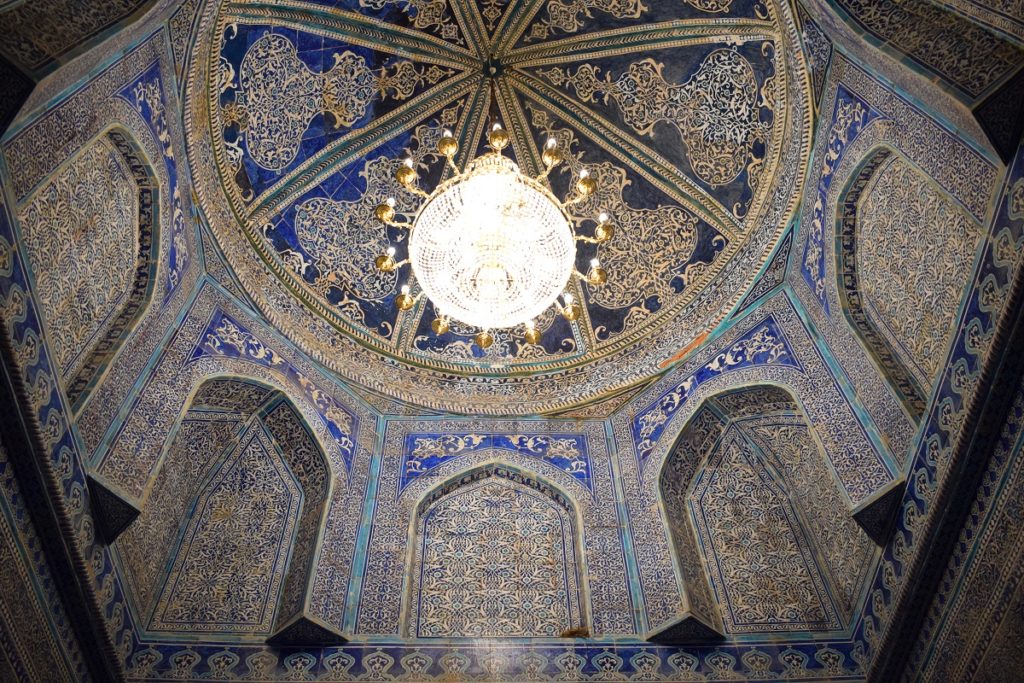
Inside the Mausoleum
We happily wandered around the meandering alleys until sunset.
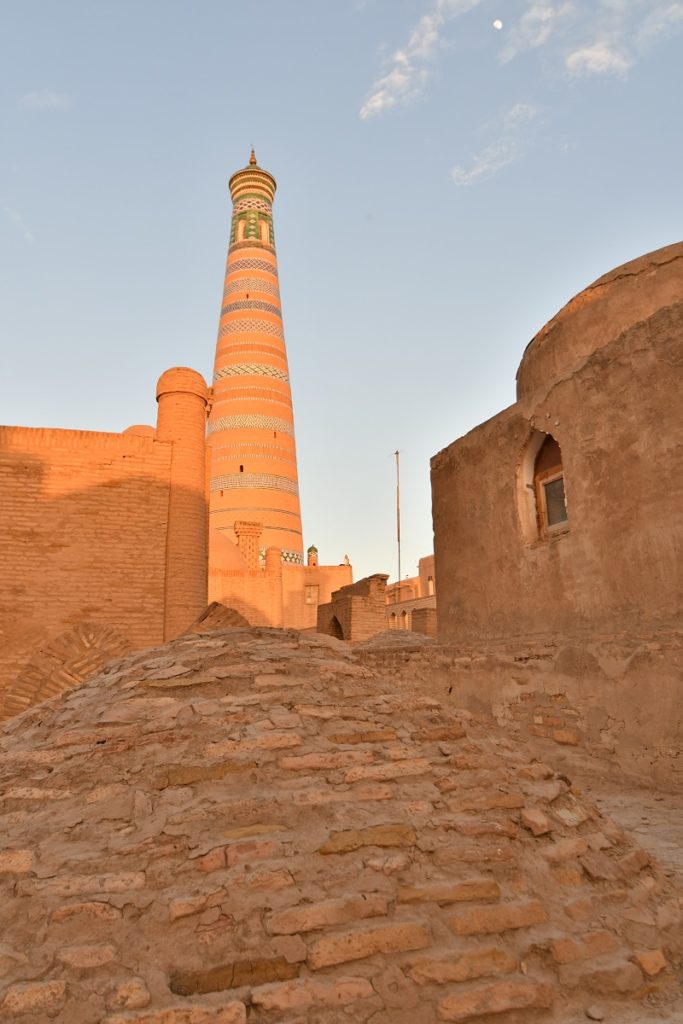
Islam Khodja Minaret 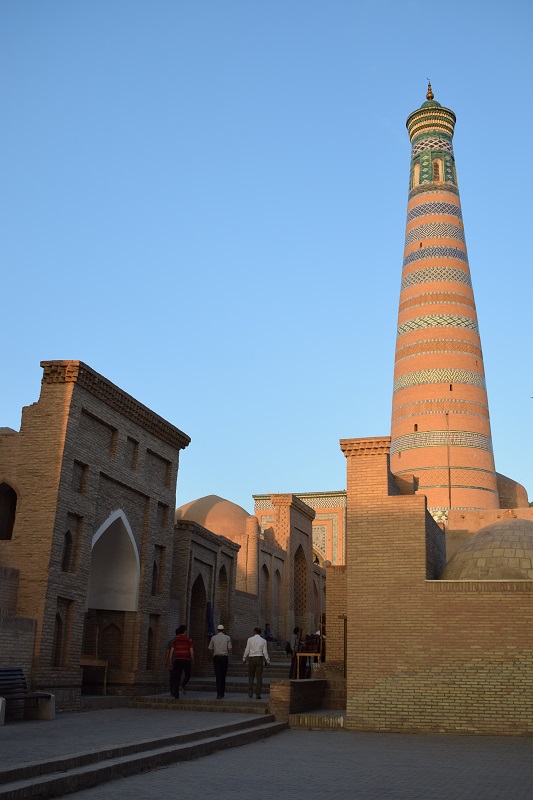

Pakhlavan Mahmoud Mausoleum
Wednesday 15th May, 2019 – BUKHARA – Central Asia’s holiest city.
We continue to retrace our steps along the Silk Road, driving east to Bukhara, 450 km away ( 7 hours on fairly good road except for the last 80km).
The old town is still very much lived-in, the streets are barely wide enough for a car but full of typical houses with inner courtyards. (though a great number have already been turned into B&B or hotels).
There is plenty to see but we just wandered around and revisited the Poi Kalon Ensemble (or “Pedestal of the Great). This is the religious heart of Bukhara, where students still come and study at the Mir-i-Arab Madrassah. The Madrassah is separated from the Kalon Mosque and its minaret by a great square. This is one of the landmarks of the city. There has been a mosque on this site since 795 but the current one dates back to 1514. It was built to house the entire male population of the city during the weekly prayer ( 10-12,000 people) and is one of the oldest and biggest in Central Asia.
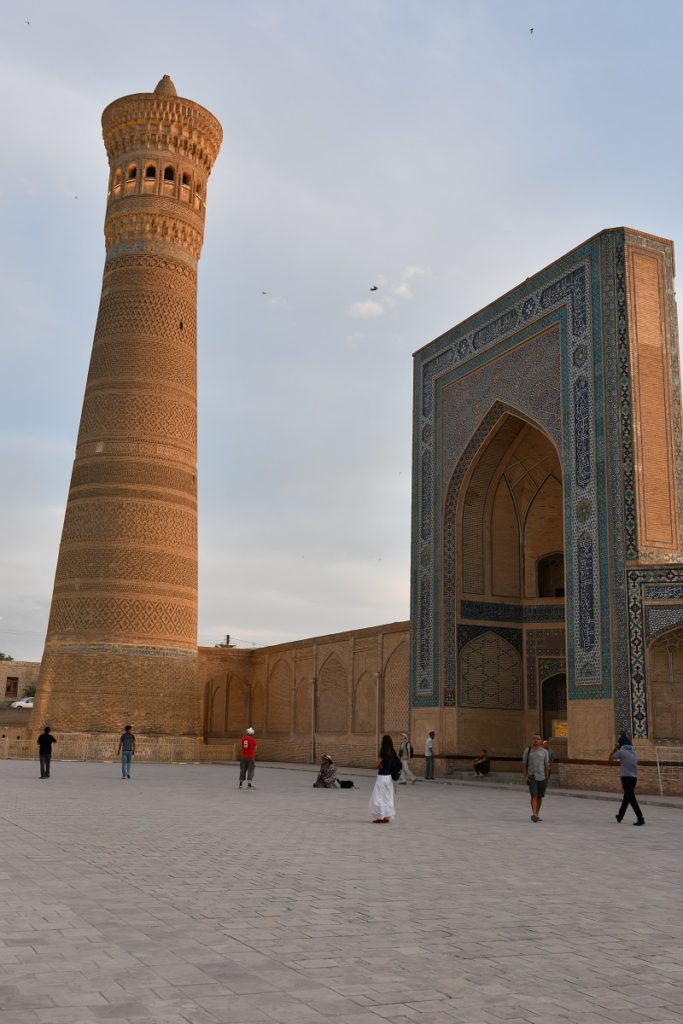
Kalon Minaret 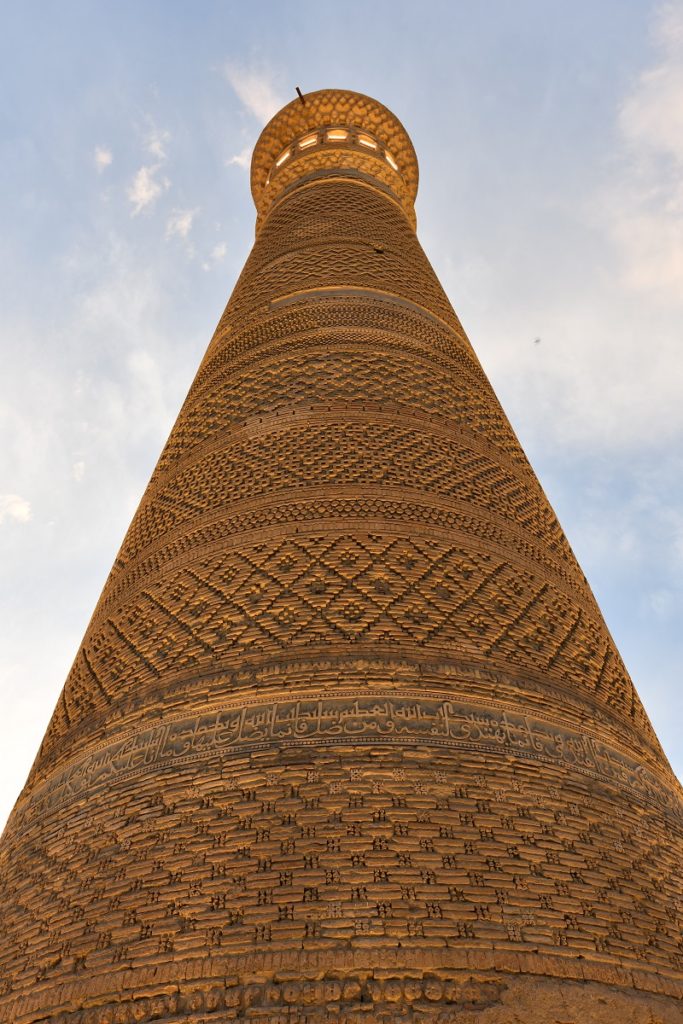
The Minaret has also been called “the Tower of Death” as up to well into the 19th century, on market days, serious criminals were led up the 105 steps, their crimes enumerated to the crowds and the criminals were then tied into a sack and thrown off the top. A gruesome but sure deterrent for the population…
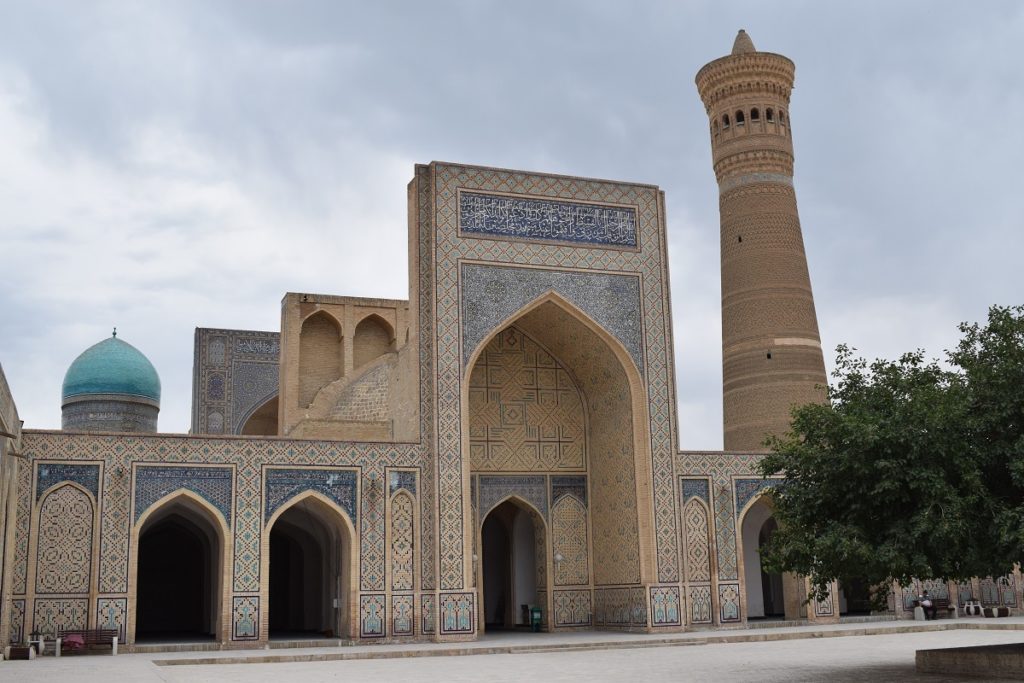
Kalon (“great”)Mosque – Friday Mosque 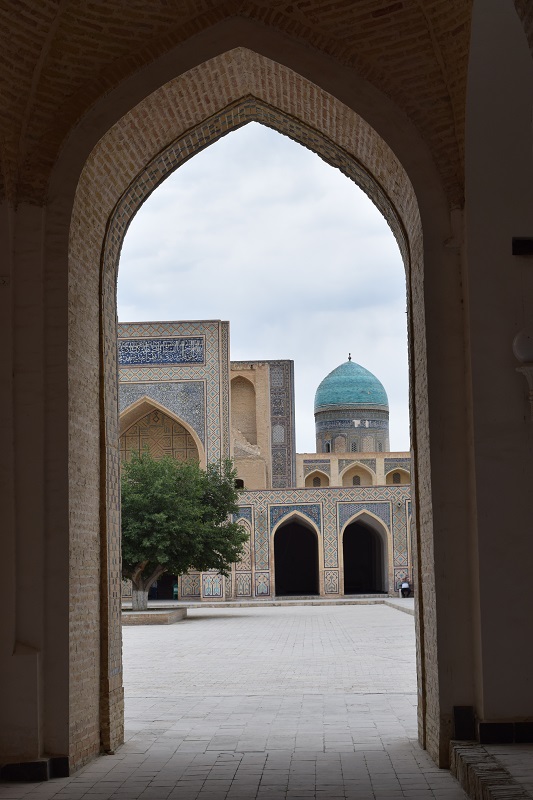
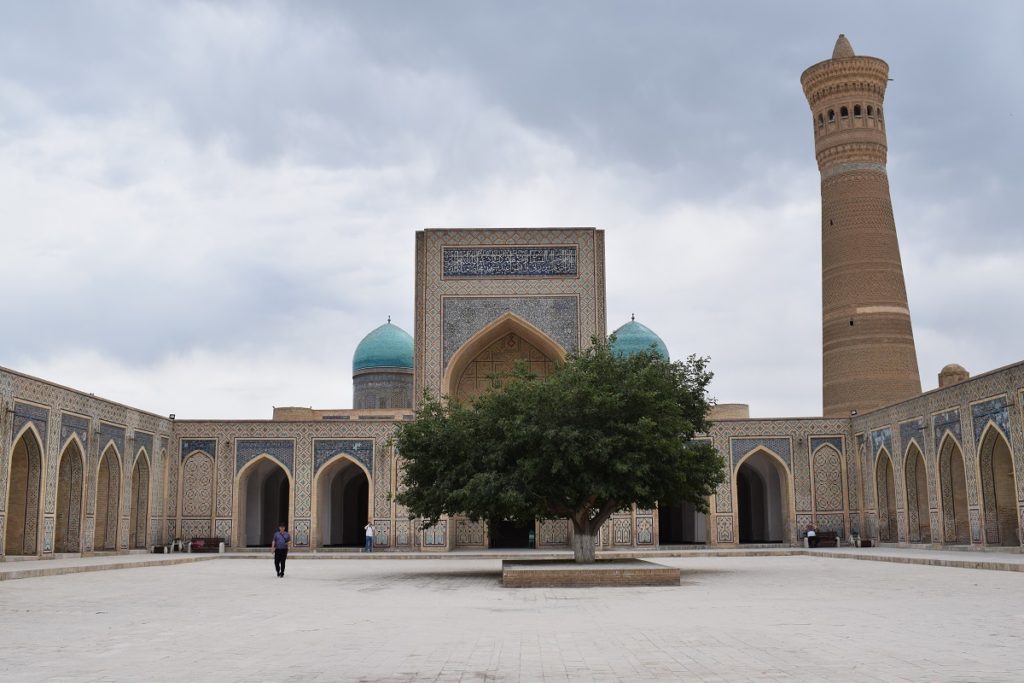
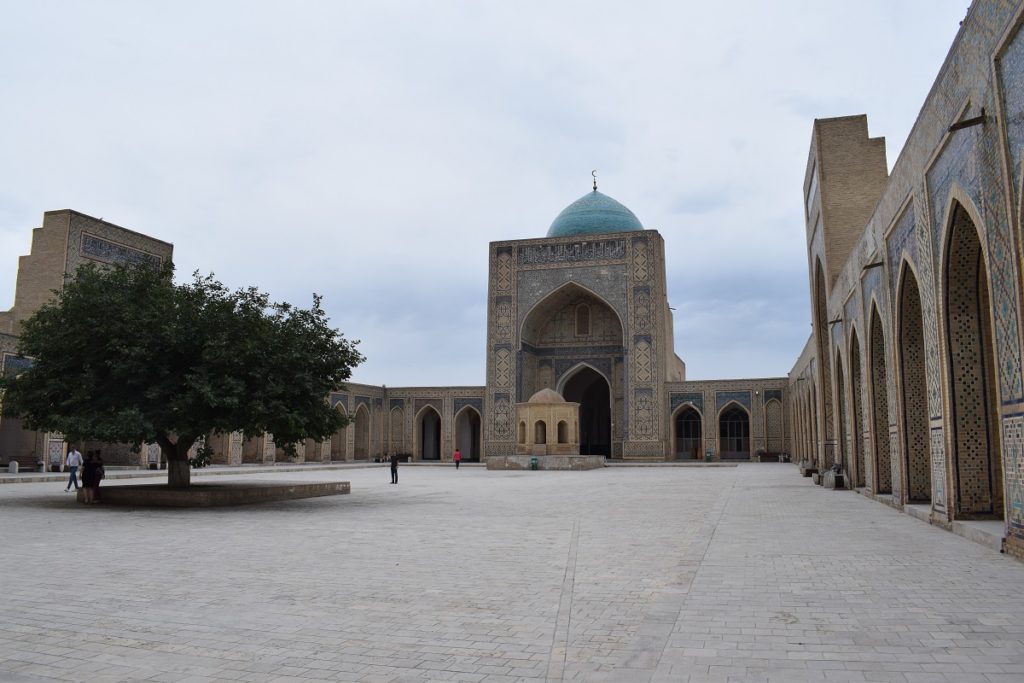
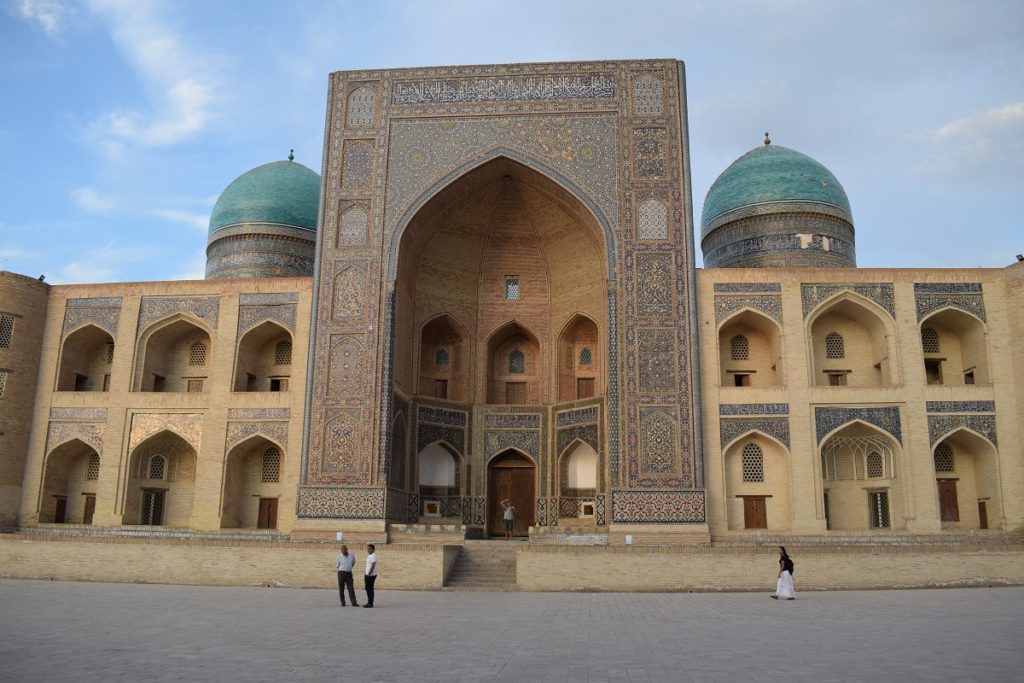
Mir-i-Arab Madrassah 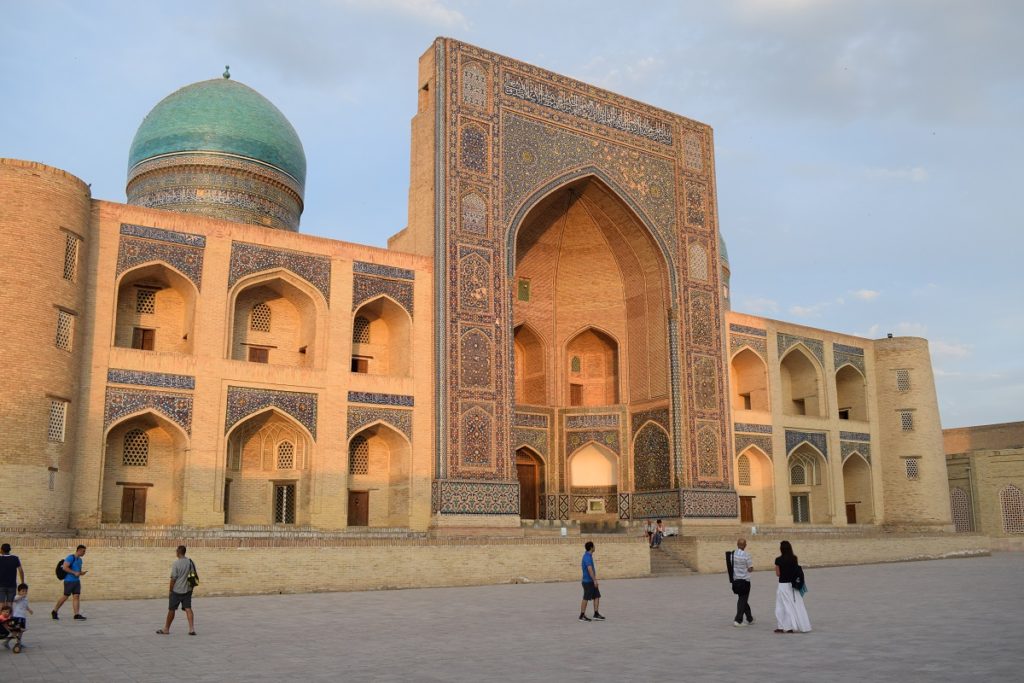
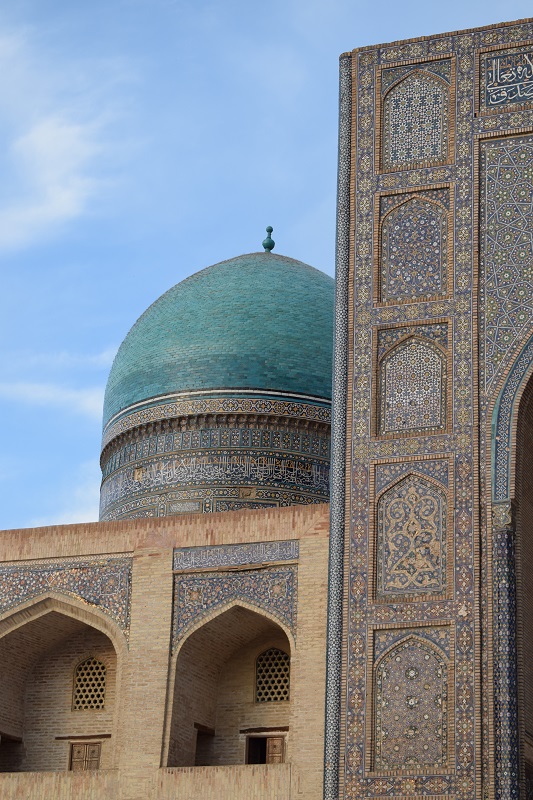
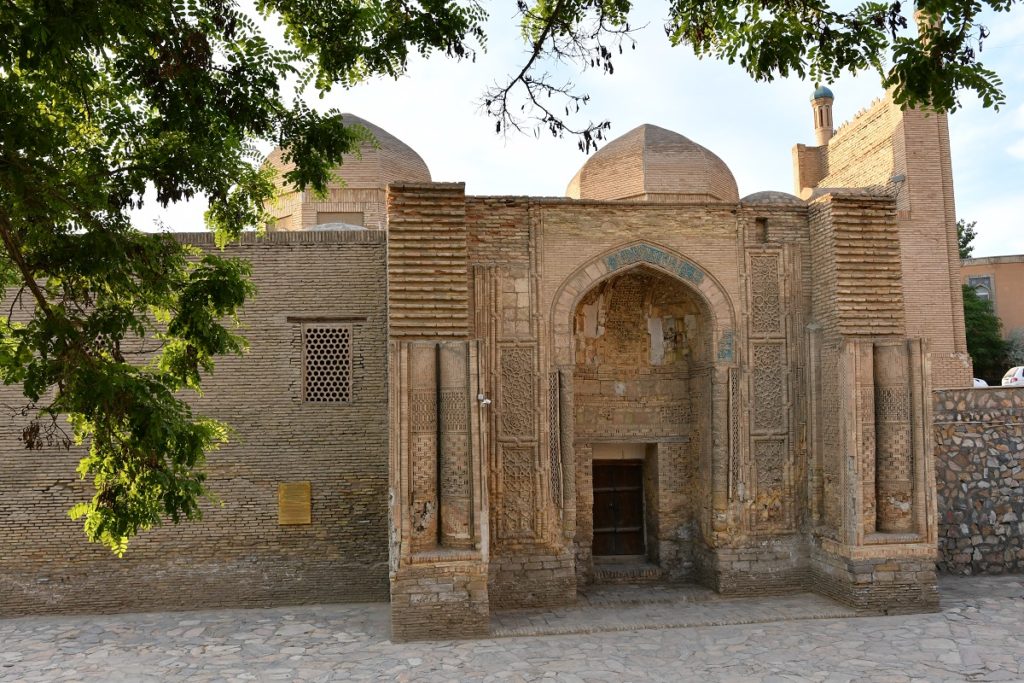
Magok-i-Attari Mosque
Thursday 16th May, 2019 – SAMARKAND
Samarkand is perhaps the most famous city of modern Uzbekistan.
Samarkand had a central position on the Silk Road between China and the West. In the 14th century Timur (Tamerlane) made Samarkand the capital of his empire. The city centre is a UNESCO World Heritage Site.
One of its most famous site is the Registan. It ranks first in Central Asia and among the greatest of all grandiose and magnificent works of the Islamic world.
Registan, meaning sandy place, after a stream which washed sand over the earth was a crossroad where six arteries of Tamerlane’s empire met under a domed bazaar. His grand-son, Ulug Beg built a beautiful Madrassah (1417-20) and two centuries later the local governor dismantled a mosque and caravanserai and ordered the construction of two new madrassah of complementary size and ornamentation to complete today’s layout.
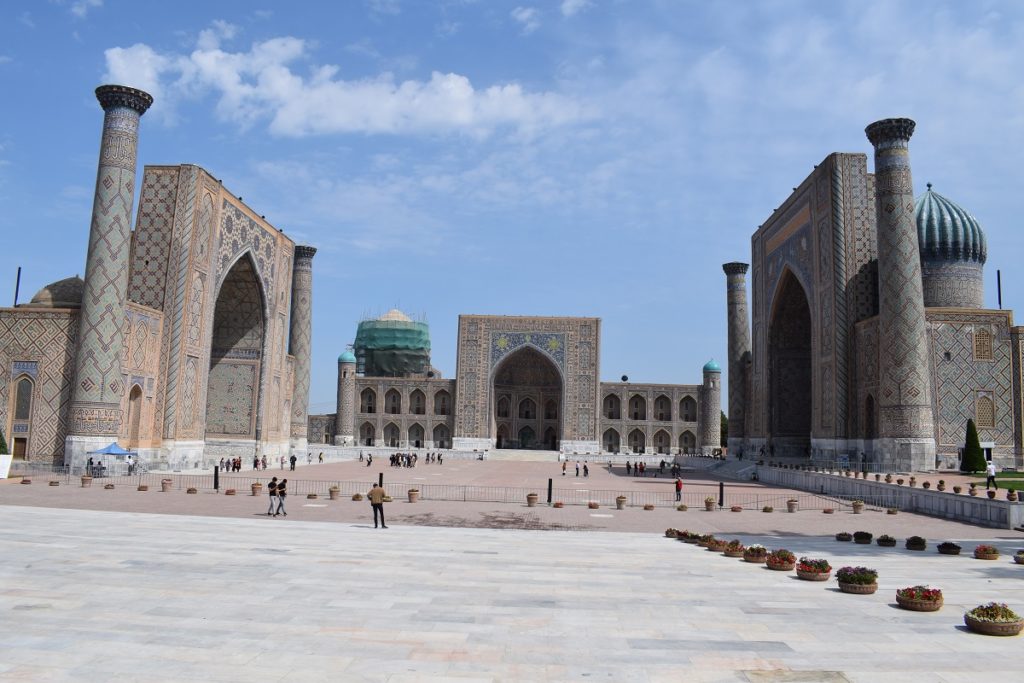
The Registan 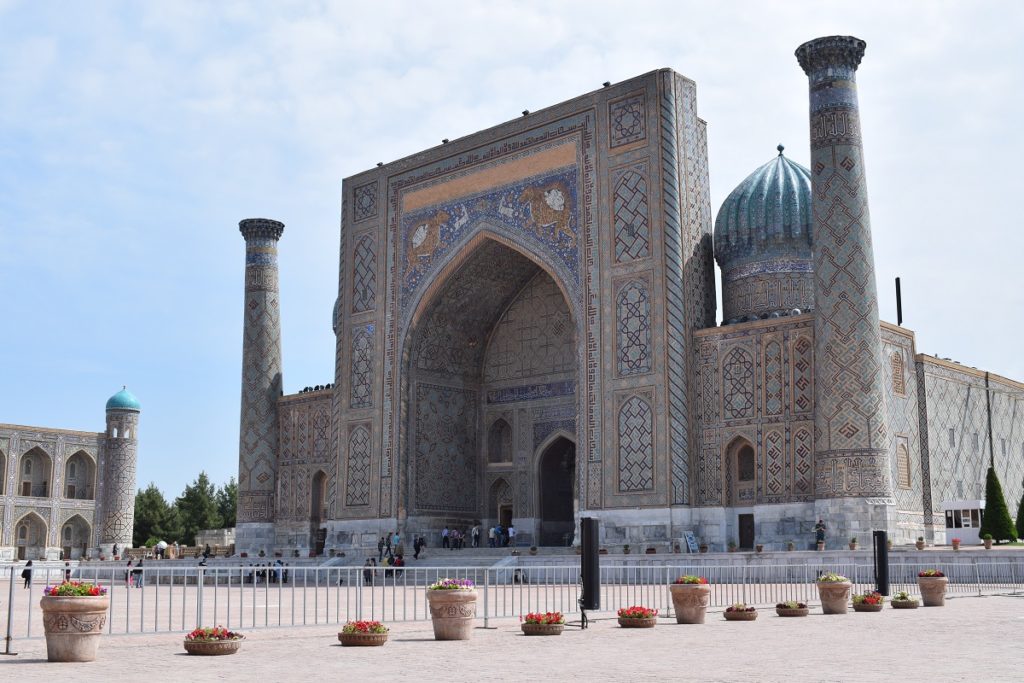
Shir Dor Madrassah 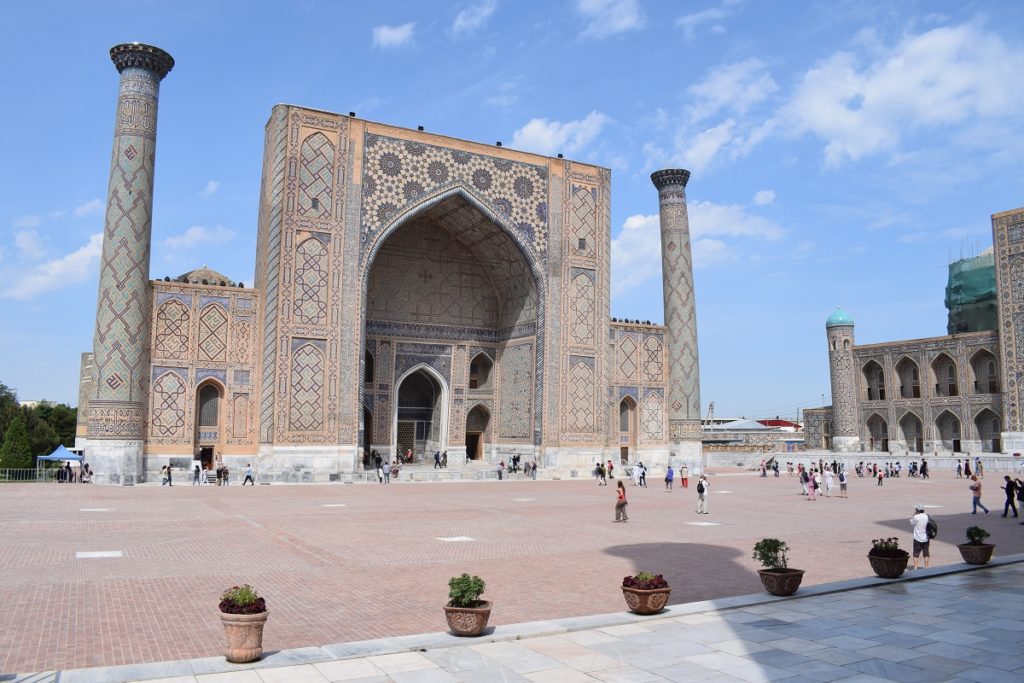
Ulug Beg Madrassah 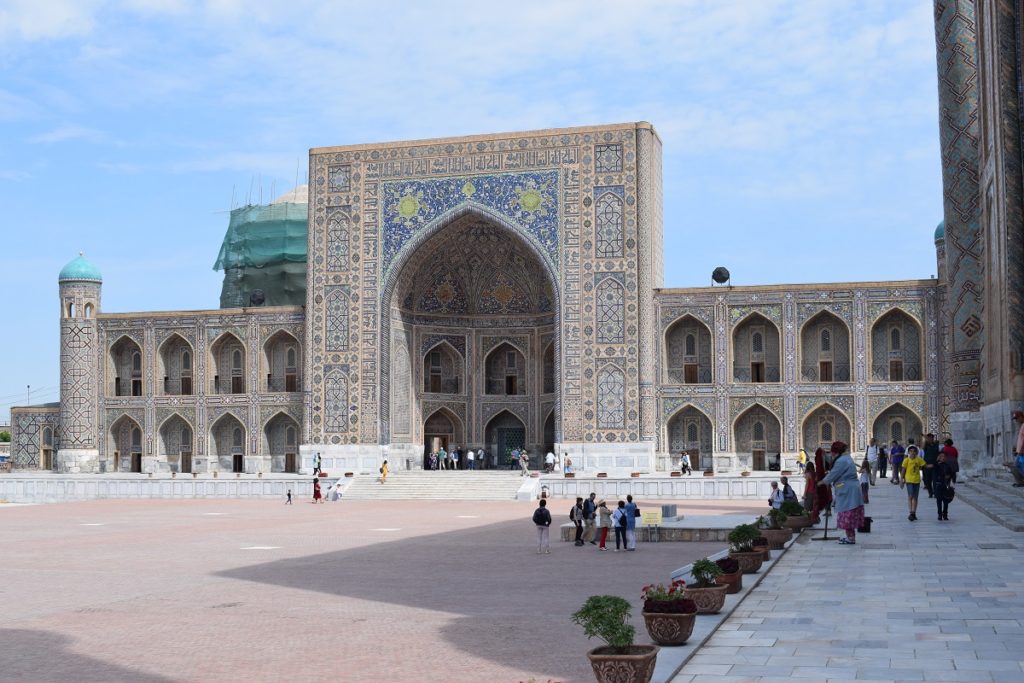
Tillyia Kari Madrassah
Gur Emir
Not too far from the Registan stands the Gur Emir, Tamerlane’s Mausoleum. There were originally a Madrassah and a Khanagha (dervish hostel) built by Tamerlane’s grandson, Mohammed Sultan, but when the latter died in 1403, Tamerlane erected a mausoleum to complete the ensemble. Tamerlane and his descendents down to Ulug Beg are buried there too. Today only the portal of the original Madrassah and the mausoleum survive.
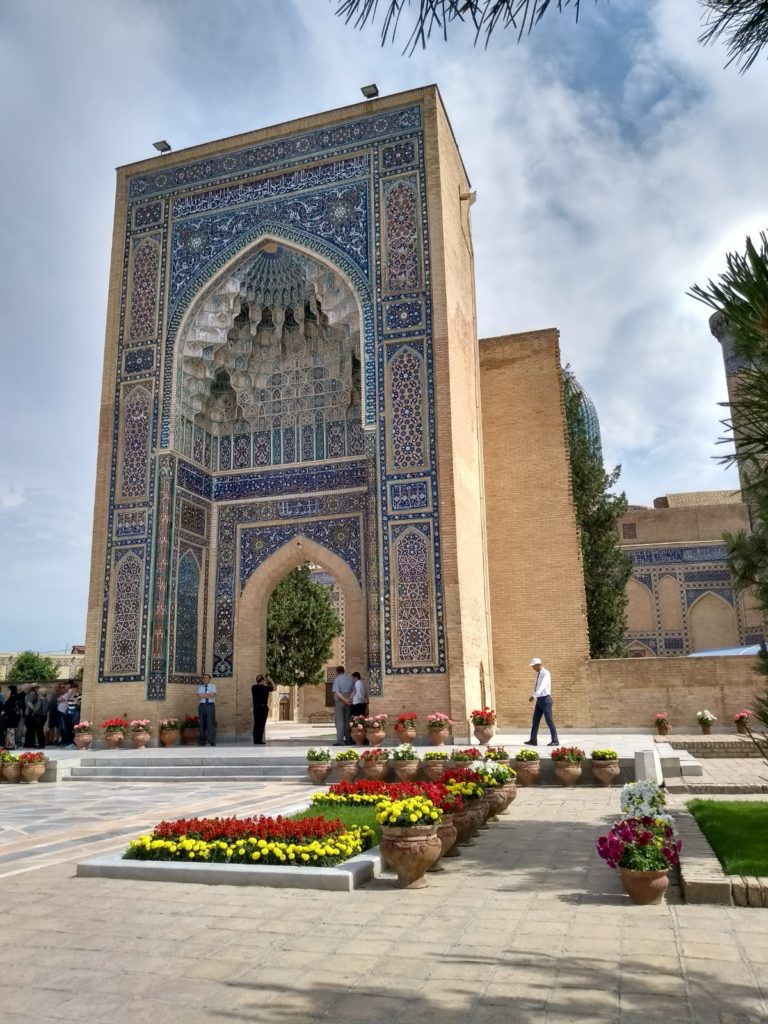
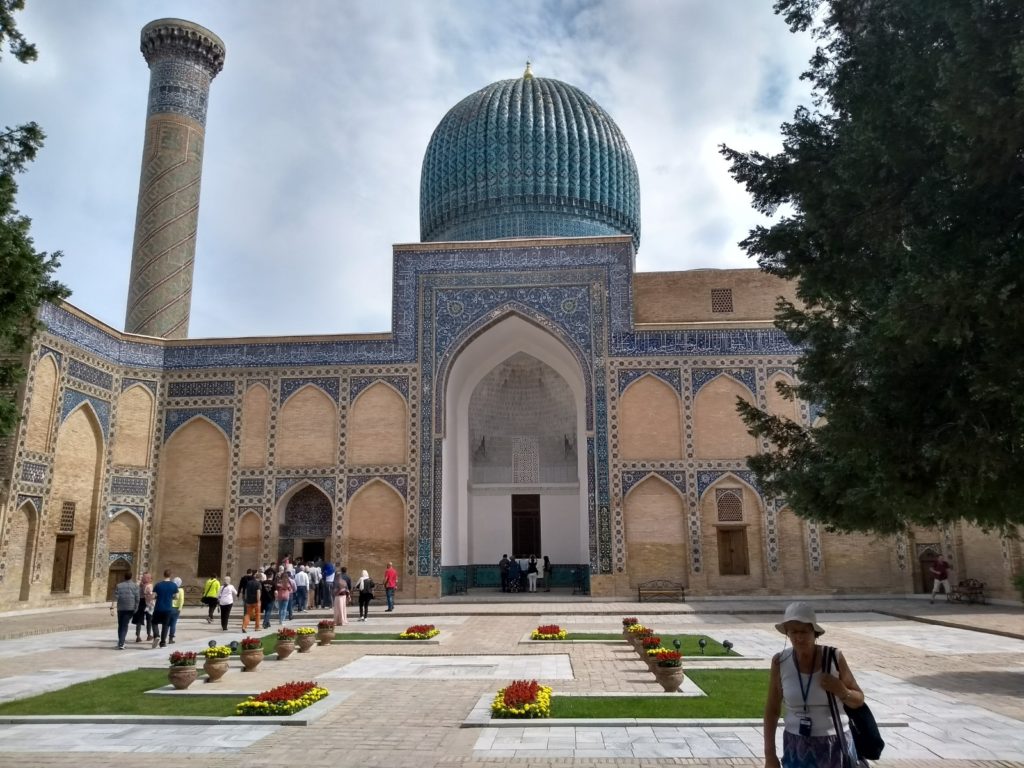
Interior courtyard 
Foundations of the former madrassah 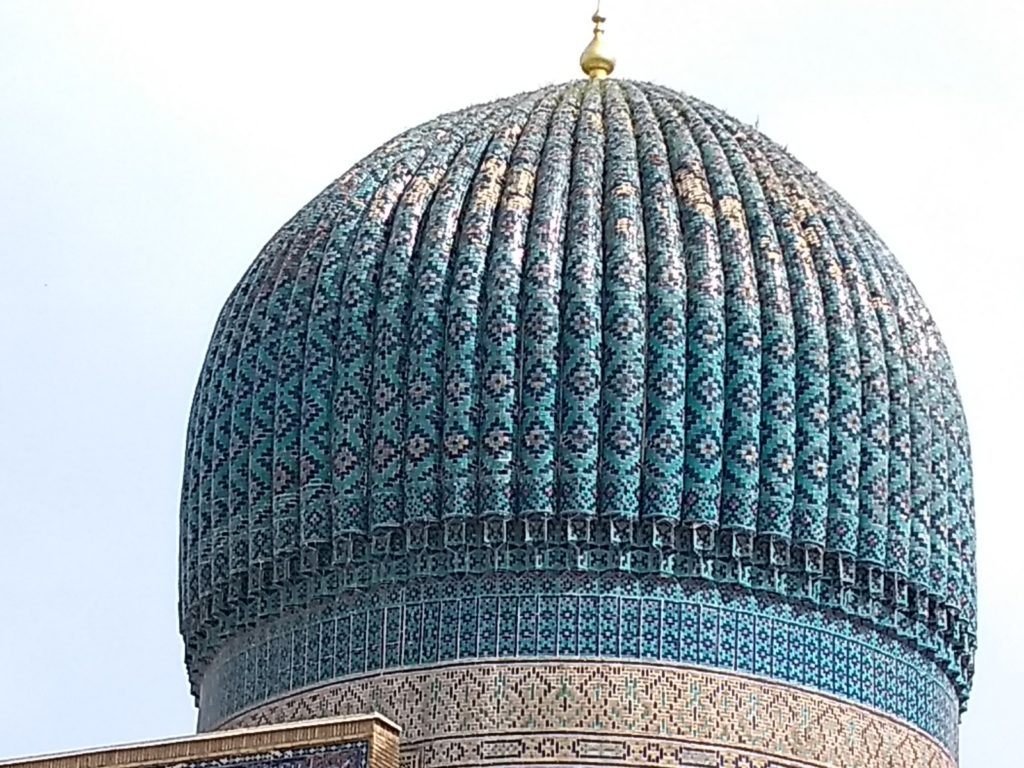
The cupola
Inside the Mausoleum:
Tamerlane’s tombstone, a dark green slab in the centre, was once the largest piece of jade in the world (1.8m long).
South east of Gur Emir is another Timurid Mausoleum, the Ak Serai (White Palace), built around 1470 and recently restored. The cupola ceiling is quite impressive.
Sunday 19th May, 2019 – ZAAMIN National Park
Decided to go to Tashkent via the Zaamin National Park which is tucked right on the border with Tadjikistan. We took a wrong turn at one point and we ended up on a bad road going through little villages until one of the locals put us back on the right tracks. The road seemed to go on and on and we had to ask our way a couple more times as by then according to the map we should have been in the National Park but we had not seen any signs. People were really helpful, we even had an invitation to go and have some food ( and drinks!) which we had to declined as it was getting late and we wanted to carry on. We inevitably had to have a photo and a few selfies….
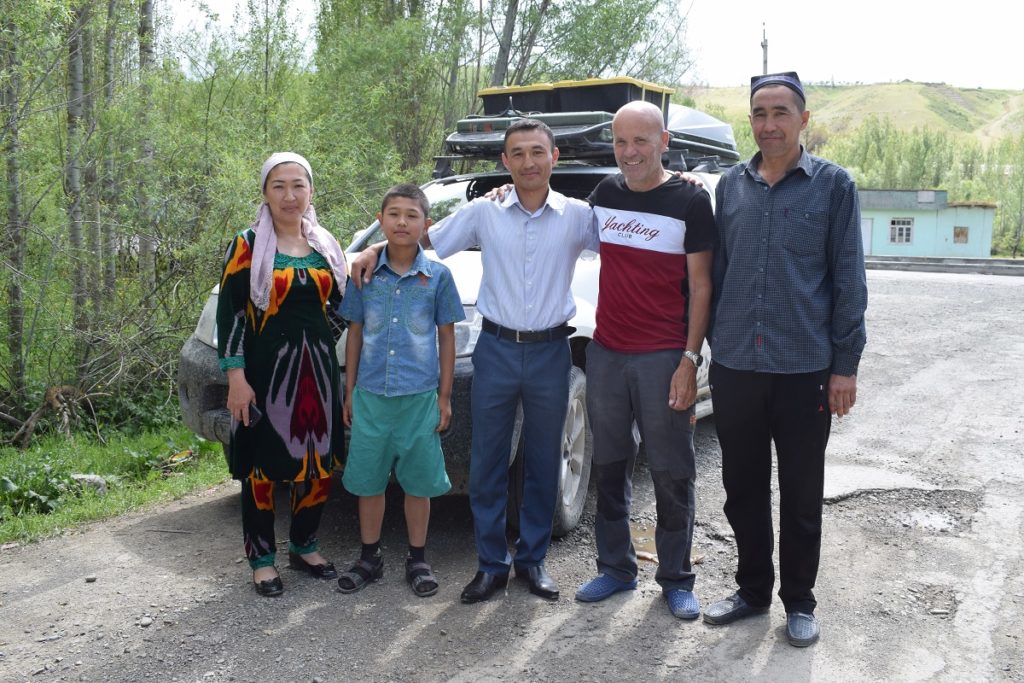
Family who put us on the right tracks 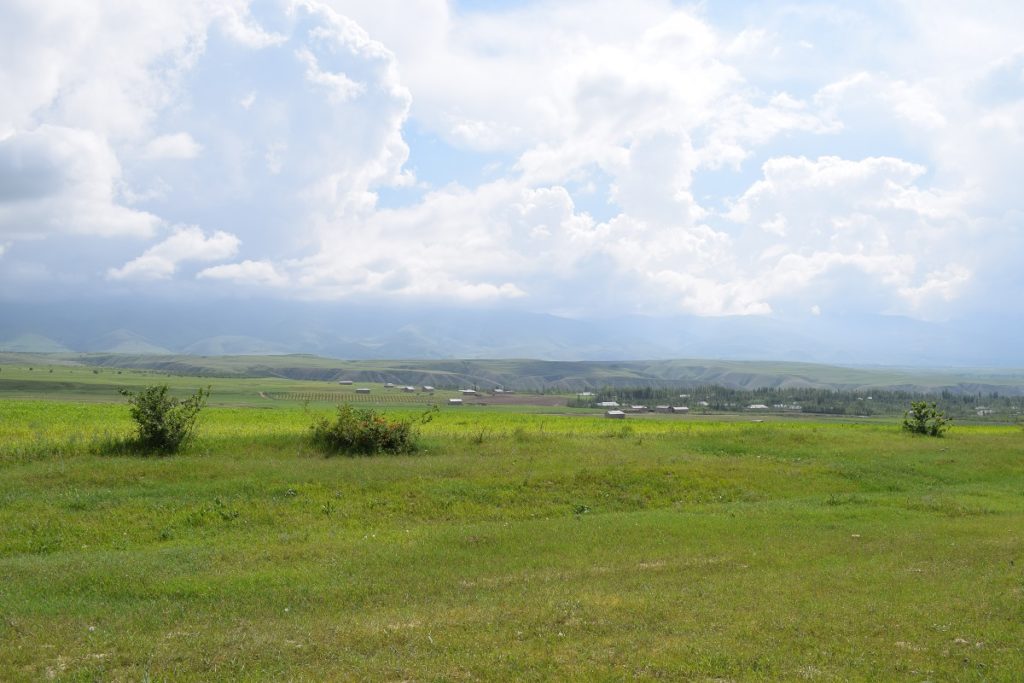
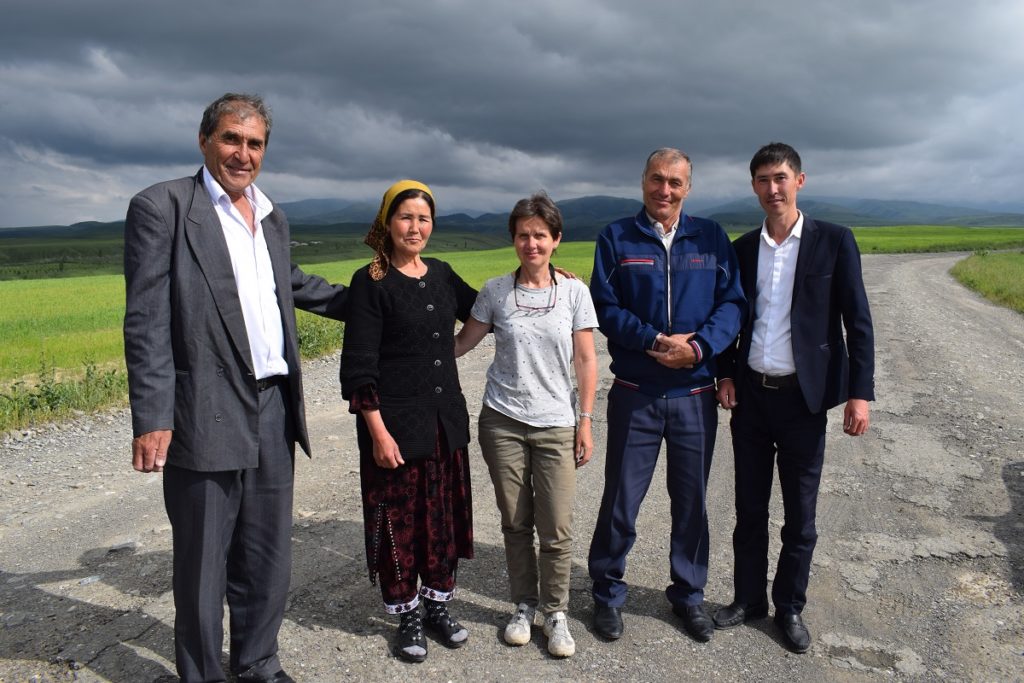
Genuinely please to meet some english people and determined to have us as guests… 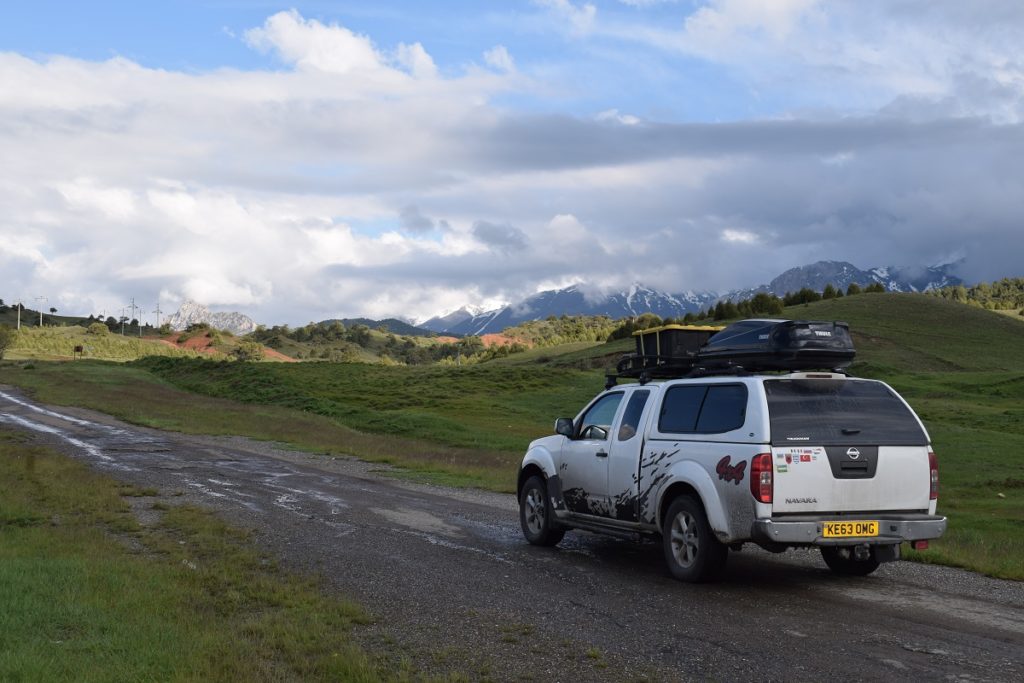
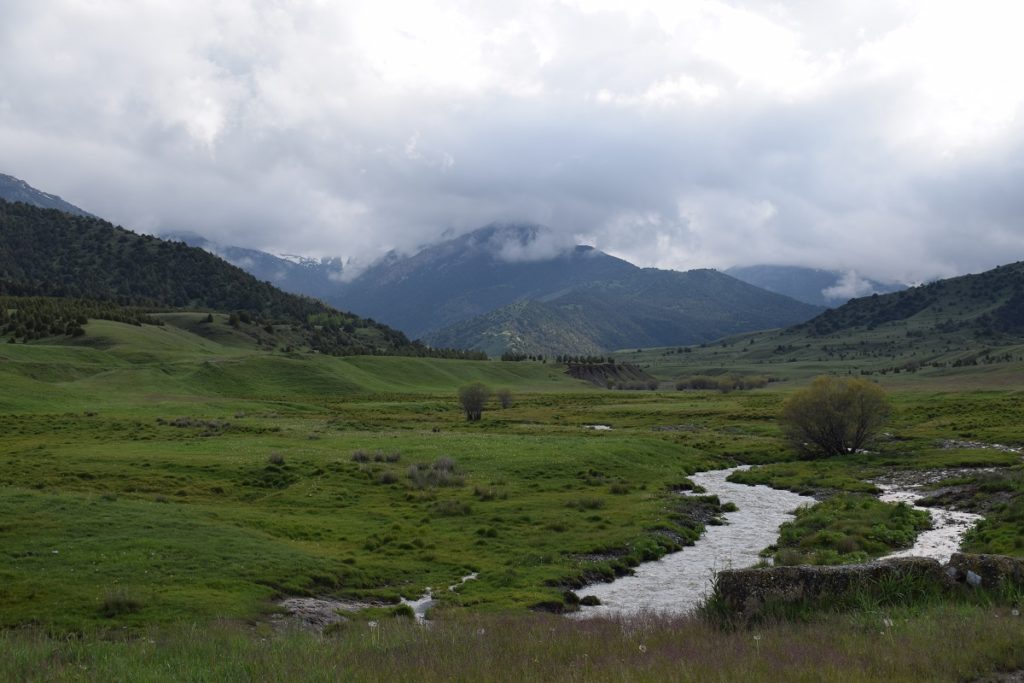
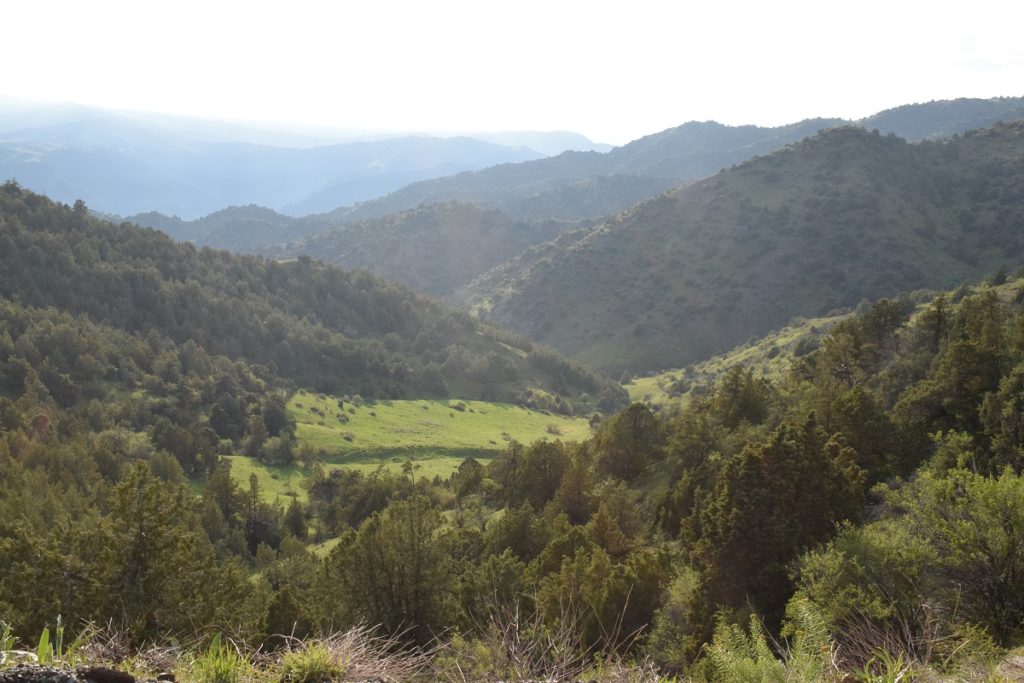
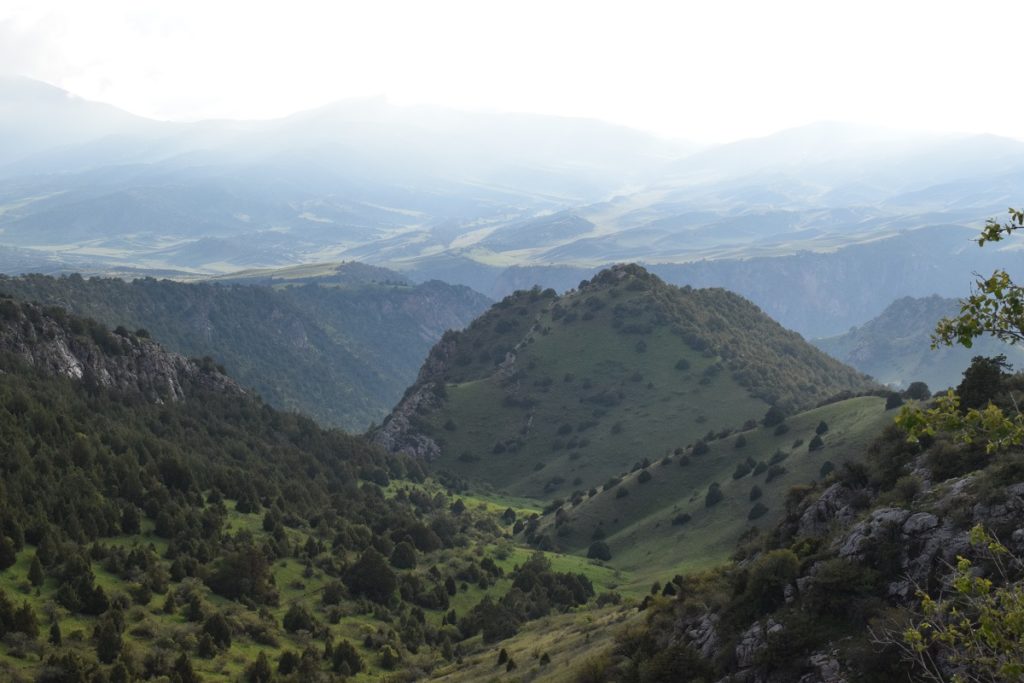
We had planned to camp so we started to look for a camping spot. We were so close to the border that one side of the road was off-limit with no trespassing signs indicating that this was in fact Tadjikistan ! We eventually found an ideal spot right on the shore of an artificial lake.
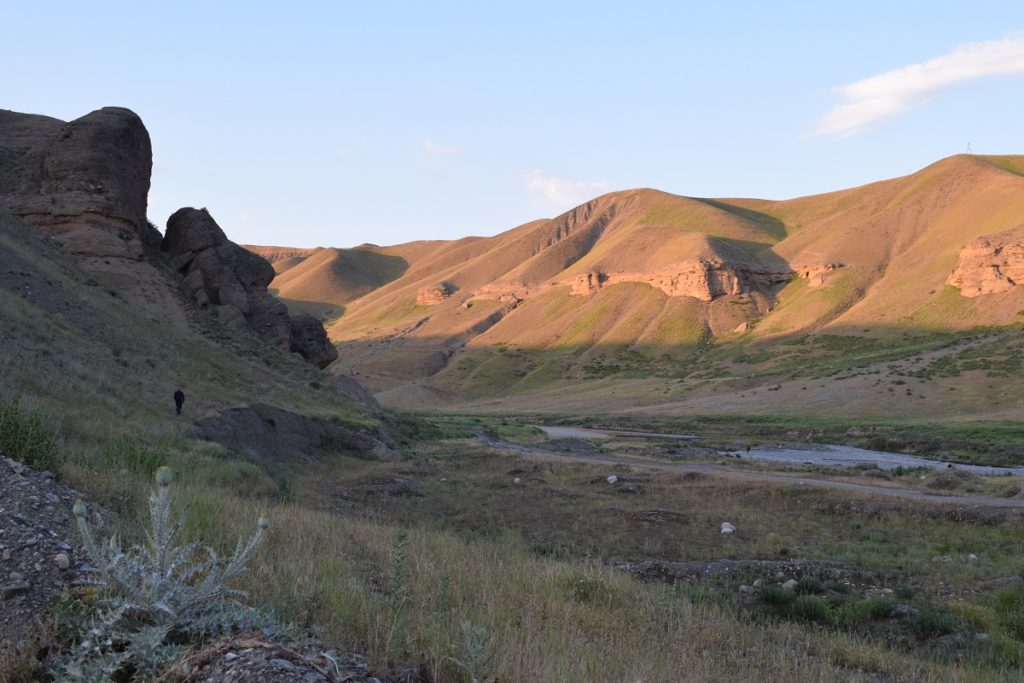
Track leading to the lake, hidden from the road 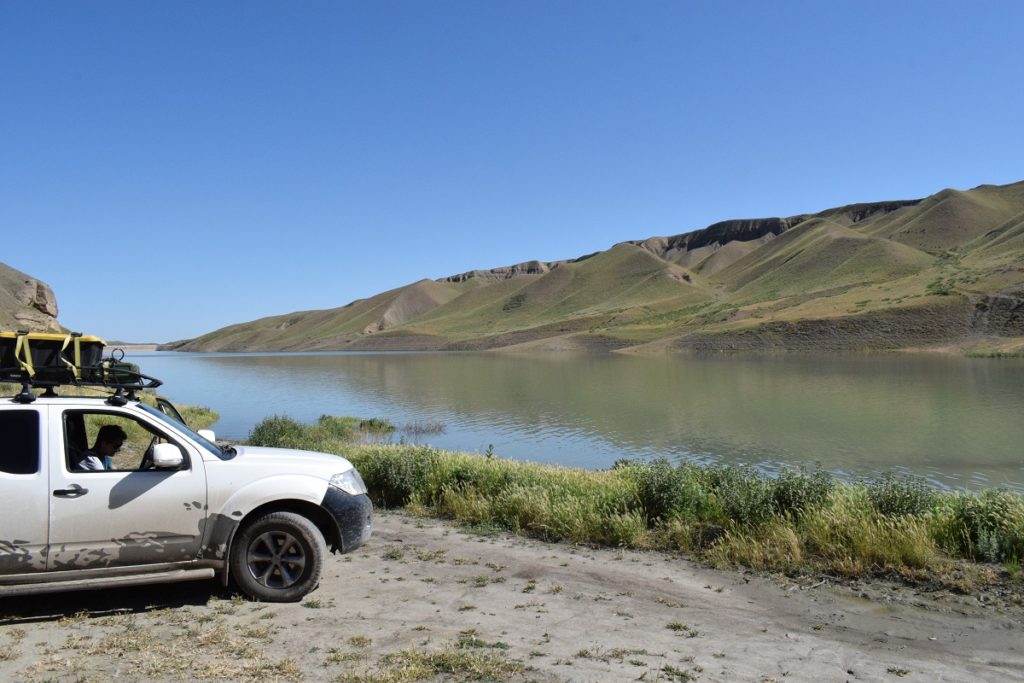
Next morning, as we continued on our way we had some great views of snowed peaks in the distance. We went on for a further 20 km or so and understood why we had not seen any sign for the entrance to the park: we had simply entered it from a different direction, where there was no official gate… and no entrance fee…
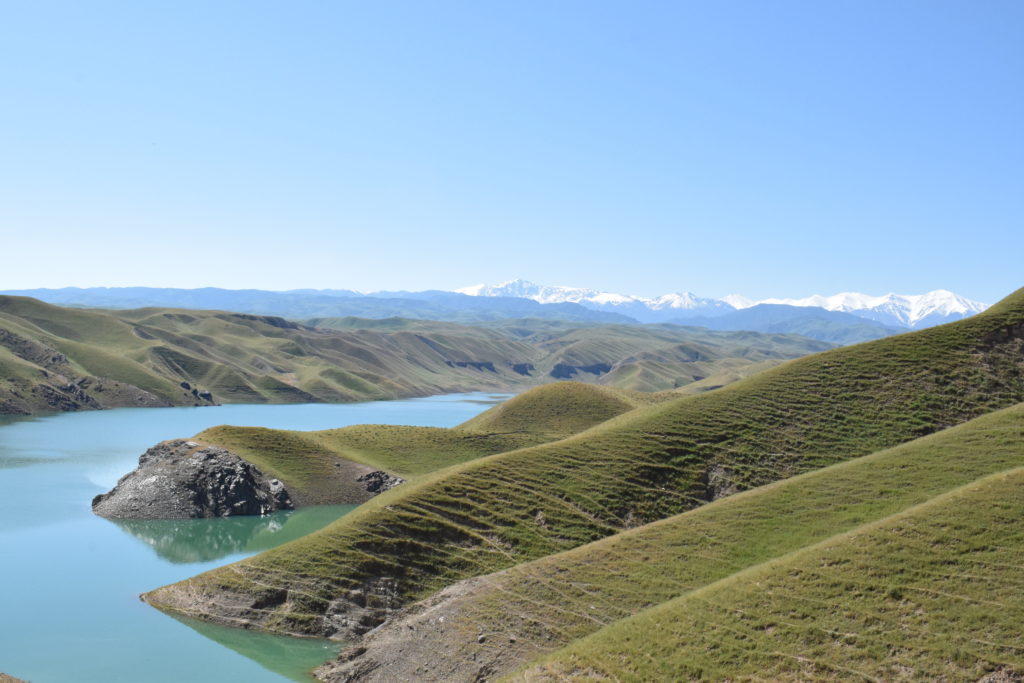
View of the lake from a distance 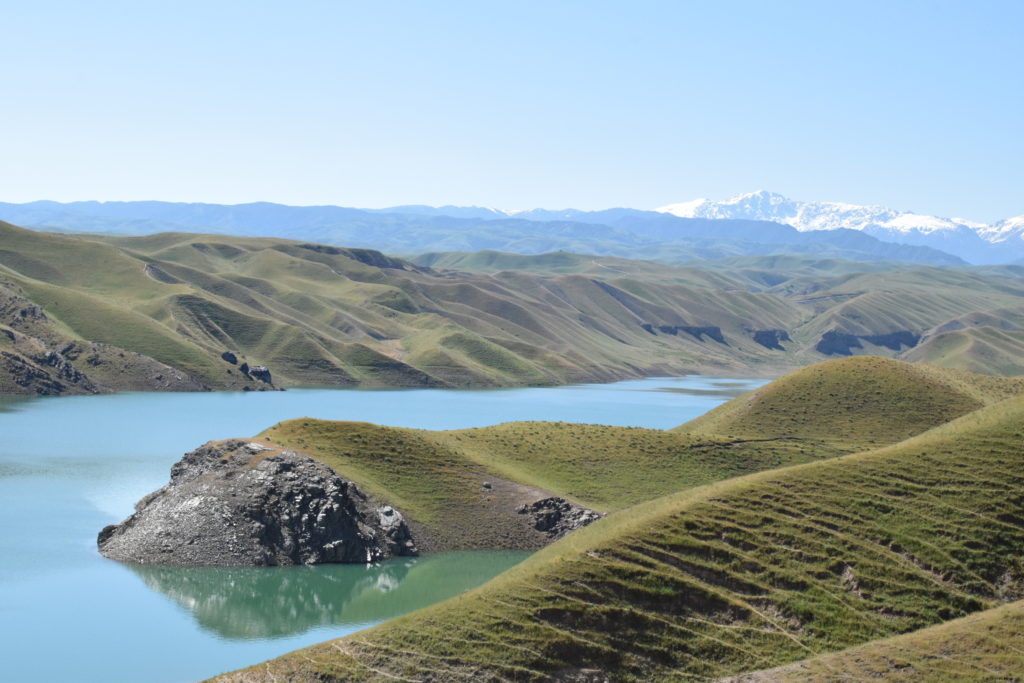
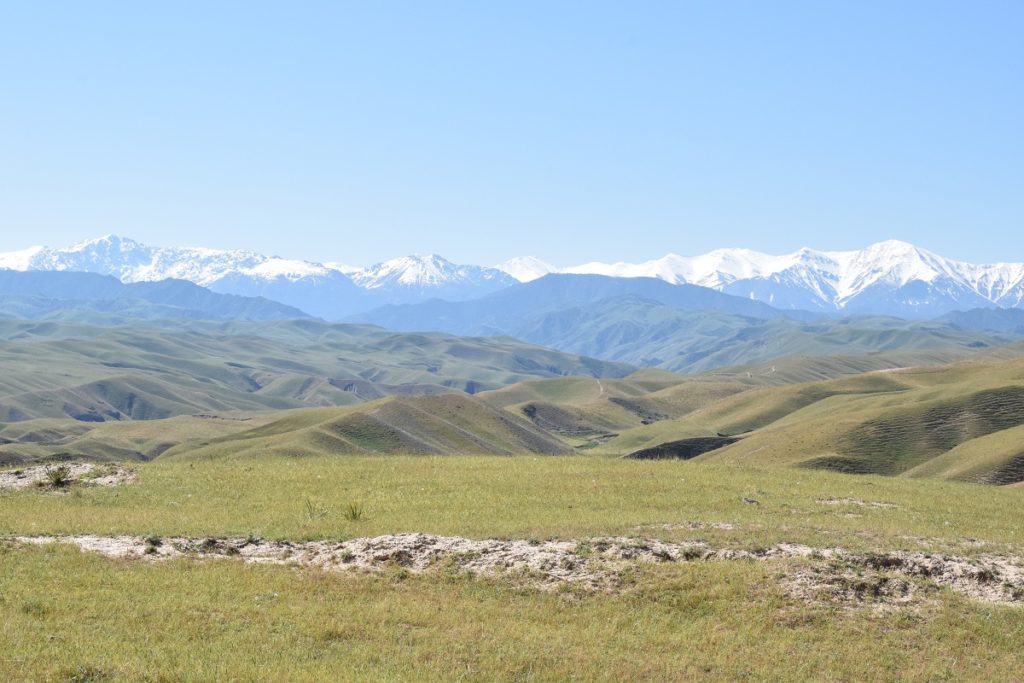
Mountains of Tadjikistan
The road went through a small town with a sanatorium, popular in soviet times as the fresh mountain air was deemed to have some curative effect on lungs problems. Both sides of the road were lined with open-air restaurants and tea houses with tapchans (large wooden bed where you sit crossed legged on which you can have food or relax with tea). The area is popular at week ends.
Not long after this we realised that something was wrong with the car. After inspection we found out that the leaf spring on one side had broken and this affected the traction. As we were not so far from Tashkent we carried on, hoping we were not making matters worse.
